#governing a state is like boiling a small fish
Explore tagged Tumblr posts
Text
@msexcelfractal
Would you consider global colonialism and climate destruction to be huge qol improvements? Industrial humanity has knowledge without wisdom and it’s going to destroy us - the ttc remains a relevant warning
i think this is a great example of not being able to even begin to take a long historical view on anything. obviously the philosophers of the warring states era of chinese history whose work was compiled into the tao te ching had not even the foggiest notion of "colonialism" as the concept is used in modern political discourse or of climate change! how could a work of axial age political philosophy, when the global population was measured in the low hundreds of millions, have anything thoughtful or interesting to say about climate change, a consequence of technological and social processes that wouldn't begin for another ~2,000 years?
the only way the tao te ching can have any relevance to the present day is if we renegotiate the text--this is something dan mcclellan talks about a lot in the context of religion; it's basically an automatic process. we have texts that are culturally significant to us, which remain important for reasons of identity, and which we thus must find ways to keep relevant, bc we're unwilling to abandon them; thus, even as the politicial/social/technological/cultural/etc. context around those texts changes, even changes very radically, we must find new ways of reading those texts in order to keep them relevant, so that we don't have to abandon them.
not only is it historically baseless, i think it indicates a profound lack of imagination and a profound inability to do the kind of thoughtful, sympathetic reasoning necessary to really appreciate texts from other cultural contexts to look at something like the tao te ching and only be able to read into it modern concerns. to, in other words, draft every ancient text you read as a soldier in modern arguments. the concerns of the author(s) of the tao te ching were completely different from yours! like, maybe if you're a committed taoist interested primarily in devotional readings of the tao te ching there's something there you can work with, but even then i think that's kind of fraught--like, i don't think Christian readings of Isaiah are on much better footing even if they admit, sure, yeah, Isaiah really has nothing to do with Christian notions of the messiah. I think you're still doing something silly there, and even if you acknowledge you're bending the text out of shape on purpose it's more interesting in its original sitz im leben.
and really--what lessons could we drag out of the tao te ching even if we dragooned it into a modern context? break the world up into sovereign states so small that the people of one state can hear dogs barking in the next state over, but will grow old and die without having had any dealings with them? how can we operationalize the dictum that governing a state is like boiling a small fish? the tao te ching is a fascinating and thoughtful book, and totally worth taking seriously--but it's not a modern work of economics or political science! and the work necessary to turn it into one would constitute constructing a whole new political philosophy that has nothing to do with the actual text and everything to do with the preexisting beliefs of the person doing the constructing. you, presumably, would build some kind of generic leftist philosophy out of it. someone else might discover it's really a tract about right-libertarianism. somebody else might decide, well, really it's about RETVRNing to some kind of ultra-authoritarian hyper-patriarchal micro-feudalism.
like, not to be a huge bitch or anything, but... be serious. think outside the extremely narrow context of contemporary political horizons for five freaking minutes.
#governing a state is like boiling a small fish#because both are ruined by being handled too much#(according to the notes of the very excellent DC Lau translation i own)
43 notes
·
View notes
Text
A Bittersweet World- Chapter One
Read on Ao3 here
Check out more of my works here
Ghouls were slowly and painfully integrating with the rest of human society. No one thought it was actually going to come into fruition. There had been many official meetings (never, of course, with ghouls because what if they hurt someone?) in governmental settings about the topic. Usually the talks boiled down to “they look and act human, is that enough for them to be treated as humans?” to which the officials would then share personal accounts of their interactions with ghouls; from the pleasant to the life-altering horrific ones.
The CCG (Commission of Counter Ghoul) was obviously against all of the talks of allowing ghouls to integrate.
“What about our jobs? More than two-thirds of the workers will have to be cut!”
“They’re man-eating monsters that can only sustain themselves on human meat!”
“All ghouls are much stronger than us, and if we allow them societal power, where will ours go?” Were a few of the many, many arguments the CCG had against ghoul integration. Ghoul sympathizers, as they were called, argued as best they could. Telling the government officials that they looked and acted human, and therefore they were humans, that there were scientists out there looking for a substitute for human meat for the ghouls to eat.
Germany had the first breakthrough regarding the diets for ghouls. They found that adding artificially made RC cells to cow meat was a nearly perfect substitute for human meat for ghouls. It tasted horrendous, most ghouls claimed, but they could digest it and it gave them nearly as much nutrients as the proper source. Soon, the United States, Canada, and England pushed for more research to be done about the meat substitute. Japan was reluctant about the whole ordeal, as they had the worst number of ghoul-related incidents from the Asia continent, even beating out places with a surplus amount of population like India and China, but eventually conceded and put forth money toward the experiment. South America and Africa were soon to follow suit, having their best and brightest on the project.
After about two years of testing, the meat substitute was given the all-clear and was on the market that the government controlled. They didn’t want to put the meat in stores as it could lead to human-ghoul violence. The CCG was slowly rebranding themselves as an institute. They were actually the ones to deliver the meat packages. They did this so that “untrained civilians” wouldn’t have to be put in the danger of going into a ghoul’s home. Very few ghouls actually did this, however. It meant that they had to give up their guise of being human and give their names and faces to the government.
Then came the official greenlight for the Ghoul Integration Movement in the United States. Rallies and riots started to happen all around the world after this, demanding that now that ghouls were given an alternative from their original diets, that they should be seen as people in the eyes of the law. That they looked human because they were human.
Then the Manchester March happened. In the early hours of the morning, starting from five in the morning till the same time the next day, ghouls marched silently all around Manchester. Many held signs and as far as the local police could tell, they brought no weapons. The march contained ten-thousand ghouls and three-thousand humans, all marching in solidarity with no violence. The orchestrator of the march was stopped by human news-casting stations and he said the same thing over and over.
“We die the same as you.”
That phrase became something of a mantra for the ghoul movement. It was written on signs and the sides of buildings and was often said at the end of interviews with ghouls. It was the final spark needed for ghoul society to unite to obtain human rights for themselves and not have to hide what they were anymore.
With the unrest happening all around the world, surprisingly, Japan was the first country to allow ghouls rights. They extended some of the human’s lawful rights to them. They made it so that ghouls could not be hunted without reason-- although the human-ghoul violence was still very prominent in the beginning.
But in contrast to all the good that Japan did for their ghoul population, they also made it nigh impossible for them to get jobs or go to school normally. If someone thought that you were a ghoul in hiding, you had to go in for testing to see if you actually were a ghoul. Ghouls who were in hiding were punished. Eventually, the Japanese government made ghouls wear a pin on all of their clothes; a singular sewn kakugan eye that made sure the humans around them knew that they were interacting with a ghoul for safety precautions. The ghouls were outraged and fought back, but were put in their place when police officers and CCG members started to enforce the Ghoul Recognition Act. Any ghoul found not wearing the badge would be seen as a threat and it would be determined by the courts if the ghoul was committing an act worthy of severe punishment.
Japan’s system soon became the norm for most countries. Ghoul sympathizers were quick to point out how the Ghoul Recognition Act was not dissimilar at all to how Nazi Germany ostrasized Jewish people. These claims fell on deaf ears and were shut down.
“It would be different if they were human.”
Many ghouls were more scared of the authorities finding out that they were ghouls and being caught rather than trying to blend in with human society and live life as normally and as unproblematically as possible.
Ghouls were allowed to play sports, attend normal schools, get married (to other ghouls), and were allowed to get jobs (so long as the employers were willing and consenting to it, of course), which were laws allowed by the world powers as a peace offering for the Ghoul Recognition Act. Most peaceful ghouls settled with this, hoping that things would change with time and that someone stronger than them would fight against the oppression the government was causing for ghouls. Many were content with not being actively hunted by the CCG.
Hinata Shouyou was one of those ghouls; born into a world where human-ghoul relations were shaky and unstable at best and downright violent at worst. Humans feared ghouls, so Shouyou pretended to be human to negate this. His mother always told him to hide his nature or he would be killed for not coming out sooner to the government.
And so he did.
***
Shouyou often found himself wishing he was just a human. Sure, his ghoulish nature made it so he had naturally better athletic abilities when it came to volleyball, such as speed and stamina (sadly not much in strength, something Shouyou totally wasn’t bitter about). But the pros of being human often weighed out the cons. He had an ongoing list in his head about the whole ordeal. He’d had his whole life to compile the list so it was extensive, but it could usually be narrowed down to three main points:
1.) He couldn’t eat human food.
Kind of a small and insignificant reason but Shouyou has had time to realize that he didn’t much care how petty the reason was. He always imagined what it’d be like to eat birthday cake or ice-cream without it tasting like boiled garbage and fish oil. His friends at his birthday parties were always so excited for cake and Shouyou was always so excited for them to leave so that they could give away the rest of the cake. It smelled good and the frosting always felt sticky but pleasant on his fingers, but he couldn’t enjoy it. He had to choke it down every year at his or his friend’s birthday parties-- otherwise he might be caught being suspicious. As Shouyou said, his friends were always ecstatic to eat cake, and a young energetic boy like Shouyou should be as well.
2.) His friends were never around for long.
Shouyou had to move a lot as a kid. His mother worked very hard as a nurse (how she kept her nature a secret was beyond Shouyou, but he was kind of an idiot like Kageyama likes to remind him, so maybe it wasn’t as hard as he thought it was). She worked so hard so that she could have the funds to move from place to place, never to settle otherwise the neighborhood could catch onto their secret. It made it hard for both Shouyou and his little sister Natsu to make and keep friends. Even with Shouyou’s cell phone that he got in his third year of middle school, it was still difficult to remain friendly with the people so far away. Izumi and Kouji were his closest friends in middle school, but now they barely interacted besides a few and far off texts trying to catch up with one another.
3.) He could die at any moment.
If someone finds him suspicious of being a ghoul, it was certain death for him and his family. It had been eight years since the Ghoul Integration Act. Natsu had just been born after the start of it. Shouyou didn’t understand a lot, but he knew how important it was to stay hidden. To not have the kakugan eye pin on his chest as an alarm to the general public that he wasn’t human. That he was a danger to society for existing.
So, yeah. Those three points on his list (amongst numerous others) were why Shouyou wished he was human. It just would make life a thousand times easier and much more enjoyable.
‘Or an ghoul uprising could happen and all these stupid anti-ghoul laws could be lifted,’ Shouyou thought to himself as he flicked an eraser shaving off of his desk, boredom making his body feel heavy like lead. He was in English class, something that he sucked spectacularly at. But Kageyama sucked at it too, so it was okay. Yachi could help him study later, he surmised after he came to the conclusion that he wasn’t going to pay attention for the rest of the class.
He looked out the window to see a CCG-qualified police officer carrying a gun and a quinque with him. The quinque was a severed part of a dead ghoul’s kagune, which was disturbing on so many levels. Shouyou tried not to think about it too much as it made him feel sad whenever he did.
The police officer was there to protect the students from ghoul attacks. So if any of the student body or the one ghoul teacher went off the deep end, he could save the humans from harm. None of the ghouls around here would ever do that as they were far too afraid of death to do something like that. The ghoul student body was always under heavy scrutiny. Any step out of line and there would be repercussions. It was bittersweet, but Shouyou was thankful that he was hiding to an extent. He never had to deal with the scathing looks the other students would give the ghouls. He never had to feel in danger for the reason that people knew what he was. Shouyou felt sorry for the ghouls that were out.
There were a couple of ghouls on his volleyball team; all of them were much quieter and scarcely touched the human members of the team, even for a high-five after a good play. Coach Ukai was thankfully not a bigot in the sense that he hated the ghoul members of his team, but he certainly was wary of them and they all knew it. Sugawara, Nishinoya, Ennoshita, Yamaguchi, and Kiyoko were all the ghouls that were out on the team. Shouyou tried to be as nice as possible and give them high-fives and slap their backs when they did something good and give tips when they didn’t do so great.
He hoped that his efforts were appreciated.
The bell rang, breaking Shouyou from his thoughts and signaling that the day was over. The redhead shot up from his seat and rushed out of the classroom like he did every day, his brown leather knapsack flapping wildly at his sides. He sped through the halls, knocking into more than a few of the other students in his endeavor to get outside the school so he could race Kageyama to the clubroom.
He turned around to look behind him to make sure that Kageyama wasn’t on his tail when he suddenly ran into somebody.
“Ow, ow, ow…” Shouyou groaned, rubbing his head where it had collided with the person’s backpack full of hard-cover books. When he looked up, he was mortified to see it was Sugawara who he had ran into at full force. The other’s face was filled with concern and looking wildly around with his eyes to see if anyone had noticed their little run-in.
‘Probably checking to make sure everyone saw that it was my fault,’ thought Shouyou as he adjusted the strap on his knapsack. One could never be too careful as a ghoul supposedly “hurting” a human student.
They had been killed for less, after all.
“Are you okay, Hinata-san?” Sugawara asked quietly. Shouyou nodded and grinned from ear to ear to show that he was alright, ignoring the throbbing of his forehead. He didn’t want to worry Sugawara.
“Yeah, I’m fine. I didn’t hurt you when I ran into you, did I?” Shouyou asked worriedly. Sugawara shook his head and smiled warmly, now used to Shouyou’s antics. The short teen glanced at the clock behind Sugawara’s head and saw the time, eyes widening.
“Ah crap, Kageyama’s totally gonna beat me! Sorry, Sugawara-san. I’ll see you in a little bit!” As he said this, he started to backpedal. The ash-gray haired teen simply shook his head and gave a little wave. Shouyou didn’t hear if the other had said anything in response as he ran full-tilt to the back entrance of the school, which was three minutes faster than using the front of the building. His legs were burning because he hadn’t stretched before his sprint, but he ignored it in favor of bounding towards the doors that led outdoors.
Breaking free of the confines of the building, Shouyou smelled the spring air and grinned as he breathed heavily and continued his sprint. The sky was a bright blue with a few clouds and the sun was warm on his black-uniformed clothed skin. He broke out into a sweat as he rounded the corner of the building to see the clubroom and was disappointed to see Kageyama already standing there.
“What took you so long, dumbass?” The angsty teen asked when Shouyou stopped at the entrance of the clubroom to stand beside the other. He was trying to catch his breath as he replied.
“I bumped into Sugawara-san on my way here.” Kageyama raised a single dark brow and reached into his pocket to get the key that Daichi had entrusted them with. He unlocked the door, opening it with a gentle click.
“What’d he have to say?” Kageyama asked and Shouyou shrugged, shouldering past the other to make his way towards his sports bag. He unzipped it and pulled out his clothes before he responded.
“I just ran into him and knocked my head into his backpack. I was too busy trying to get here to beat you to the clubroom to stay and chat.” Shouyou responded and Kageyama did some sort of grunt. The redhead pulled his white practice t-shirt over his head and then his practice jersey. He was in the middle of pulling up his shorts when Kageyama spoke again.
“We should invite Sugawara-san to join us in our early practices,” he said carefully as he sprayed an aerosol can of pain reliever on his ankle. Shouyou stopped for a second, surprised. Kageyama was never outright mean to their ghoulish teammates, but he was never nice to them either. But of course, he wasn’t anything but cool and calculating when it came to volleyball (unless he was yelling at Shouyou).
“Yeah, we should. I’ll ask him when he shows up today.” Shouyou replied with warmth filling his response. He was a little sad to think that their early practices that were just the two of them would expand to Sugawara-san, but he found that he didn’t mind quite so much when it was Kageyama who asked about adding him. They changed in silence after that, but it was a comfortable one.
Once they were ready, they raced towards the gym. Shouyou thought that their little races were both the most frustrating and the highlights of his day. They were in their own little world when Shouyou suddenly stopped, sniffing the air.
It smelled like copper.
Kageyama paused as well, shooting the other a dirty look, then a confused one when he saw the expression on the redhead’s face. He turned to see…
“Kageyama, go get someone.” Shouyou said slowly. Kageyama stood there, frozen with shock. Shouyou understood, but he knew that he would be more useful here rather than the angry teen behind him.
“Kageyama!” Shouyou barked and the other sprinted in the direction of the school. The redhead leaned down, placing a hand onto the dirt ground.
There, lying passed out, was Yachi. With a chunk of her shoulder bitten out.
#viktor.txt#viktoryyy_arts#viktory-arts#writing#fanfiction#fanfic#haikyuu fanfiction#hq#hq!!#tokyo ghoul#tokyo ghoul au#a bittersweet world#haikyuu!!#haikyuu#kageyama tobio#kageyama#hinata shouyou#hinata#sugawara#sugawara koushi#karasuno volleyball club#My writing#Original Work#tumblr writers#writers on tumblr
7 notes
·
View notes
Text
How to Develop Avatar’s Season 4 - Part 3
1 The Pillars of Season 4
In order to move discussions about future Avatar past mere speculations about what the creators were thinking, or whether or not going beyond Aang’s journey makes thematic sense, you have to start coming up with answers for what a 4th season would have been about: through which characters’ eyes do we primarily view the story? What is the overarching conflict? Who, or what is the primary threat? What are the new goals for the original cast? What challenges will they face? What changes will they go through? And so on.
Fortunately, the three Fire Nation comics give us insight into what the creators had in mind for a 4th season. That being said, the comics are not Season 4. A Season 4 would not have had a Zuko that is so brain dead that he would forget his responsibilities and make a deal with Azula to give her the crown so he could live with his “real” (i.e. biological) family in some small town. A Season 4 would not have retconned Ursa so that she was exclusively a hapless victim of the royal family and not directly responsible for the killing of Fire Lord Azulon (this is not what the show implied, nor what the creators and prior official content stated about Ursa). A Season 4 would not have had an Azula whose multiple layers of inner turmoil vanish off-screen so she could become a “weightless, free” anarcho-guerilla inside her own country (see: Smoke and Shadow), among other problems.
Nevertheless, the comics contain the critical elements necessary for devising a comprehensive post-finale story. These story elements are fundamental; they originate from the internal logic of the show and the loose threads left behind. However, since the comics exist and will likely never be retconned or remade, we may never get the “true” Season 4 that is revealed by these fundamental story elements. In that sense, these story elements could be thought of as the “Remnants of Season 4”, but that isn’t a very positive way of looking at things. It suggests we fans can’t use our own imaginations to fill in the gaps and come up with better answers than what the market forces affecting Avatar allows. Fans should be encouraged to use their imaginations, so I call these story remnants “The Pillars of Season 4” because they provide the foundation for building a compelling, consistent continuation of Avatar past the ending in the finale.
1.1 Pillar #1: Resentment & Opposition to Zuko
In Zuko’s coronation speech at the end of the show, he said he would restore the honor of the Fire Nation, that the road ahead would be challenging, that one hundred years of war had left the world scarred and divided, but with the help of the Avatar, they could get it back on the right path and begin a new era of love and peace.
A new era of love and peace. Rebuilding. Healing. That is exactly what the world needs. The Water Tribe needs love and peace. The Earth Kingdom needs love and peace. Rebuilding the Air Nomads needs love and peace, but the Fire Nation… Does not. Remember that the Fire Nation was not militarily dominated at the end of the show, nor was Zuko part of a wider internal movement to overthrow the current leadership and undo the past one hundred years. We did observe a small community suffering due to the war (the fishing village on the river), but this is not shown to be widespread; we are shown far more clean Fire Nation cities with substantial industrial activity in the background. The Fire Nation was not decimated by a century of invasion, nor was it brutalized by an external (or internal) foe that requires rebuilding from. It doesn’t need to heal. It is not scarred. It is not divided (more than any other stable country, that is).
Zuko took power while the Fire Nation was at the height of its power and prestige and he believes it needs to be taken down several notches, that its honor questioned and its feats during the war impugned and undone. How many Fire Nationals are going to accept that view, especially from someone who was so recently deemed a failure and traitor by their previous Fire Lord? How much of the nobility, government and military is going to be skeptical of his intentions, or even downright furious at his ascendance? How many people in the Fire Nation are going to view him as a usurper, as a traitor, as an unworthy recipient of the crown? What kind of actions is Zuko going to take that will inflame these parts of the populace so much that they actively resist him? Notably, this is what happens in The Promise.
One could take the stance that Zuko becoming Fire Lord was enough to set things right, that the whole Fire Nation simply rolled over and became obedient, but an instantly reformed Fire Nation has no potential for conflict and drama and thus no potential for a story. It also conflicts with official descriptions of the present culture of the Fire Nation, which Zuko is very much not a representative of as established by the fact that he became disillusioned with it. Therefore, the cause of Season 4’s central conflict is this: Zuko’s idealism must collide with the reality that the Fire Nation is not ready for the demilitarization, disgrace and emphasis on morality that it deserves.
What are some of the potential points of conflict between Zuko and his country? They could be: dismantling the colonies, mishandling the relocation of the colonials to the homeland, using vast amounts of Fire Nation resources to rebuild the world, mishandling the rapid demilitarization, being viewed as a traitor serving the interests of the world versus the Fire Nation, being seen as trying to destroy valuable parts of Fire Nation culture, and so on.
At the same time, members of the old regime—the bureaucracy that manages the country—might flee their posts, leading to momentary disarray and less qualified replacements; they might drain the royal coffers and armories and hide it to undermine Zuko; they might clandestinely divert funds, sabotage his efforts, or even embed themselves in his new cabinet to sabotage him from within.
In short, things are not going right for Zuko. They can’t be if you want a compelling central conflict.
In the words of Uncle Iroh, fire is the element of power. The people of the Fire Nation have desire and will and the energy and drive to achieve what they want. From that statement alone, it can be ascertained how that type of culture can have an aggressive, ambitious, ruthless streak buried within that must be controlled less it boil over into disaster (Sozin’s desire for conquest could be argued to have stemmed from this culture). As a result, the Fire Nation should be full of people who view Zuko’s rise as an unjust coup by their nation’s enemies, his actions as the willful destruction of the Fire Nation’s legacy and his lack of heirs as an opportunity to make sure Zuko’s policies end with him, which is exactly what happens in The Promise: multiple, constant assignation attempts on Zuko as a result of his destruction of the colonies.
So the 1st pillar of Season 4 requires Zuko to face opposition from his country over his policies surrounding the end of the Hundred Year War and his goal to change Fire Nation culture. The next pillar concerns the royal family.
1.2 Pillar #2: The Anemic State of the Royal family
The royal family is both a hereditary monarchy and one in which the leaders must be seen as worthy of their role. Although it was never shown in the series, Bryke have stated that they believe Fire Lords are expected to “prove their worth” and can have their authority and hereditary line challenged through Agni Kais. This is partly why they have to be powerful firebenders and proficient fighters. At the same time, the Fire Sages also play some role in the legitimacy of the Fire Lord, though this role is not clear. Perhaps it is like the Shogun/Emperor relationship from ancient Japan, where the Shogun had the “blessing” of the Emperor, but it was really the Shogun who ran the country while the Emperor acted as a figurehead and cultural leader. At any rate, Zuko inherited the throne after defeating and/or incapacitating Azula and the Fire Sages in the capital crown him the new Fire Lord...
… But it’s only him. He has no other family ready to continue his legacy. Are he and Mai married? … No? Are they having kids any time soon? Not for several years at best. At the same time, his father is in prison and his bending has been removed, making him both ineligible for the crown and a threat to Zuko’s plans. Ozai is simply out of the question. Making matters worse, Zuko’s mother is gone, Iroh is a childless old man and his sister is both in a form of prison and, seemingly, mentally unfit to rule in addition to being a hostile member of the old regime. Maybe Iroh could be considered as shoring up the royal blood line, but he has no children and he might not last that long.
This “anemic” state of the royal family could allow the ambitious-types in the country to smell blood for a regime change. Those who hate Zuko could view this as an opportunity to off him and the rest of the royal family. Maybe they want a Fire Lord who will do what they want or be easily manipulated. Maybe they want a new royal family with a larger network of existing family. Maybe they want to get rid of the royal family altogether and replace it with something else, such as a return to the Fire Islands (think of the feudal domains of ancient Japan or the numerous kingdoms of ancient China).
But that’s what the ambitious, disgruntled members of the country think. For the rest of the country, the anemic, divided and dysfunctional state of the royal family sends three troubling messages: 1) that their country’s leadership is unstable and that it might be better to get a change over with now lest it be catastrophic later; 2) that the most powerful people in their country (the royal family) disagree with what’s best for the country when they are supposed to know what is best; and 3) that the current royal family might be permanently divided.
And Zuko sees this. In the beginning of The Search, he comments how his father being in prison, his sister in an institution and his mother being missing for years sends a bleak message about himself, his country and family. If the royal family is supposed to be exactly that, a family, as Zuko laments, then is the fact that he went to war with his own family (to do what was right) sending the message to his people that they should go to war amongst their own family (their fellow citizens) to do what they believe is right: either overthrow the Fire Lord, or stop him from being overthrown? That’s kindling for a civil war. Notably, that Earth Kingdom academic’s explanation about a nation being a large family is based on Confucian thought.
Second to this, Zuko also feels depressed that he doesn’t have a real family. Yes, he has the Gaang. Yes, he has Iroh. Yes, he has Mai, but the fact that he can’t sit down for dinner with a mother, father and sister like a normal family eats at his soul every night and day as portrayed in The Promise and The Search. It’s something he wants, something he craves and it is a constant, depressing reminder of how messed up his family is. Gaining friends through the Gang and wearing the crown hasn’t fixed that.
But we know Zuko can never have those things, at least not for a long time. His father is a menace, his sister is an enemy and lunatic, and Iroh is just one uncle who, while like a real father to him, is a reminder of how dysfunctional his family is. His mother is also gone… Or, does she have to be?
She might very well be alive. If Zuko finds her, he can have a mother again and not only that, he could use it as an example of the royal family being on the path to recovery. She isn’t his enemy. There’s no bad blood between them. If he could find her and bring her back, then he would feel less alone and the royal family wouldn’t be as empty. It would just be his mother, but at least it’s something, and this is exactly why Zuko decides to put his duties on hold and look for his mom in The Search.
The 2nd pillar of Season 4 must be this: the currently anemic, dysfunctional state of the royal family must have wider implications for the success of Zuko’s rule and the Fire Nation at large.
The fact that Ozai is in prison with his bending removed is not important because he is a villain who deserves it, but because he is the father of the Fire Lord and that’s how bad things are between him and his son. The fact that Azula is in an asylum is not important because she is a villain who deserves it, but because that’s how messed up the princess is. The fact that Ursa is missing is not important because Zuko misses her, but because the mother of the prince and princess is not supposed to be missing.
This bridges into the next pillar of the season: the search for Ursa must represent a step toward rebuilding the royal family.
1.3 Pillar #3: Finding Ursa is a Step Toward Repairing the Royal Family
When the show ended, the number one question captivating fans was, “What happened to Zuko’s mom?!?” The creators even teased us with it in Korra. Certainly it was a worthwhile question to answer and the creators thought so too, having stated in interviews that they storyboarded the reunion scene, but ultimately gave it the axe because they felt it needed more time to be properly told.
This was the right move. Having the reunion scene be a 30 second blurb at the very end serves no greater purpose than to give Zuko a happy moment. Such a shallow handling of the subject would also have had other unfortunate implications. First, it would have trivialized the freshly revealed issues that Zuko’s sister has with their mother, which were depicted as being of much greater psychological importance to her than to him, and secondly, most critically, it would have erased the enormous value that the search for Zuko’s mom has for continuing the show past the finale. This is a key point: the search for Zuko’s (and Azula’s) mom is the key to bridging the gap between the end of the show and the start of its continuation. This is because fans are already interested in the subject of Ursa and it was left unresolved; it was a blatant loose thread that was compelling enough to answer. Putting the search for Zuko’s mom at the start (or close to) of a 4th season would allow fans a way of immediately buying into a continuation of the series.
However, it is a waste of time if the search for Ursa is merely an adventure for the Gaang and Zuko. The events that occur and its outcome have to tie into the existing problems surrounding the royal family (see: Pillar #2) and must contain conflict, uncertainty and contribute to the overall story that Season 4 aims to tell. This means the search for Ursa cannot be simple and cannot merely be about finding Ursa. It must hit multiple turtle ducks with one loaf of bread. So how can this be done? How can the search for Ursa be both full of conflict and uncertainty, contribute to the overall story and convey the theme of rebuilding the royal family? By applying the 4th pillar: the Fire Siblings must work together to find their mom. This means the return of Azula.
1.4 Pillar #4: The Fire Siblings Work Together to Find Their Mom
There were two loose threads at the end of the show. The first was well recognized and obvious: what happened to Zuko’s mom? The second was less universally recognized, but equally perplexing: what is the ultimate fate of Azula?
In addition to being a top villain, Azula underwent the most rapid and unexpected change of any character in the franchise, creating questions about her motivations and personality where none had previously existed, but yielding very few answers in return. What should have been a triumphant battle between her and Zuko—obvious evil versus obvious good; a bully getting squashed by their victim—turned into a somber event backed by sad violins. So was the fade-to-black at the end of the Agni Kai the last we should ever see of her?
It turns out that Azula is critically important to the layout of a 4th season. There are three reasons for this. First, she is Ursa’s daughter. Since Ursa is Azula’s mom, Ursa is going to implicitly care about what her daughter thinks and feels, regardless of our (the viewer’s) feelings about her villainy. At the same time, Zuko is going to care about what his mother thinks and feels, which means we are going to care about what Ursa thinks and feels about Azula. If Zuko’s mother is expressing concern, regret, longing, etc. over issues relating to Azula, then Zuko is going to take his mother’s feelings to heart because that’s the kind of person he is; he isn’t going to dismiss his mother’s feelings out of hand because Azula makes him and others uncomfortable. Consider this: is it really Avatar’s place to talk about what it’s like to have family members in prison who were rightfully convicted? Because that is a dead-end topic full of heartache and distress with no hopeful message or inspiring resolution.
As a result, when Zuko decides to find his mother, the topic of Azula is going to arise immediately because he knows his mother is going to care about her. This makes the search for Ursa the most logical re-entry point for Azula. This is a key point: just as the search for Zuko’s mom is the bridge between the end of the show and its continuation, the search for Ursa is the bridge for bringing back Azula. We care about Zuko. We care about the Gaang. We also care about Ursa, but we don’t necessarily care about Azula. Tying her into the search for Zuko’s mom softens the shock of her return.
But why bring Azula back at all? Aren’t we done with her? Can’t she just be left as a “messy” part of life so the Gaang and Zuko can go on new adventures and meet new people?
Azula’s ultimate outcome is relevant both for the sake of Ursa and for the future of the royal family. Keep in mind that Zuko is both the supreme leader of his country and default leader of his family (which is in shambles). He is responsible for a great many things greater than himself and his feelings. It is his job to ponder questions like, “Should I execute Azula, or keep her alive?” Or, “If I keep her alive, what is ultimately done with her?” Or, “Would annihilating her ability to be a credible authority in the country (i.e. remove her bending) be a mistake further down the road?” And even, “Are those actions in line with the kind of person I am?” Zuko can’t shy away from these questions and neither can we.
Whether or not Azula can be part of a functional, peaceful royal family with Zuko is not what’s important. The fact that Azula is Ursa’s daughter is what’s important and unassailable. This, however, is minor compared to the next two reasons for Azula’s involvement in Season 4.
The second reason Azula is critical to a 4th season is because she is a young member of the royal family who can firebend. That fact alone makes her supremely relevant to the success of Zuko’s legacy. Will the country view her as a natural, more desirable alternative to Zuko? Will they disregard Zuko’s attempts to make her ineligible to rule? Will they view Azula as hope they can have her as a leader some day (and undo Zuko’s policies)?
Not only would the opposition have their eyes on Azula, but will Zuko hope that Azula can be integrated into his rule in a timely fashion, thereby strengthening both his position and the royal family’s?
You could take the viewpoint that nothing bad will happen in the decades it takes for Zuko to raise a family, but Zuko’s enemies might act much sooner (and they have to since the goal is to create a gripping story). From Zuko’s perspective of looking at the big picture, it might be regrettable in the long term if Azula’s potential to help stabilize the country and royal family is left unfulfilled.
The third reason is because Azula is a well-regarded, powerful and highly accomplished member of the old regime. Not only is she an alternative to Zuko by family, but also by her reputation and abilities; the forces in the country that oppose Zuko might want to use her to neutralize him; they might also hold her in greater esteem than Zuko and view her as the rightful Fire Lord.
We know it is not this simple, though. Azula is not operating from a clean slate. She suffered a psychotic episode so bad that even Zuko and Katara were able to take pity on her. Instead of putting her in prison and having Aang remove her bending, Zuko had her incarcerated in straight jackets and padded cells in relative comfort. She also just embarrassed herself in front of the whole capital and, by extension, the leadership of the country, by banishing all of her servants and guards for no good reason (seriously, where did the Dai Lee go??) Maybe the events that transpired in the finale shifted the public’s view of Azula from being a “terrifying yet inspirational” leader to being weak-willed and too unstable to be Fire Lord despite her accomplishments. Maybe she has lost the respect and confidence of the people who would have otherwise sought her leadership.
At any rate, whoever gets a hold of Azula has a powerful weapon at their disposal. If the opposition acquires Azula, they will be made substantially more powerful and legitimate. On the other hand, if Zuko can get Azula on his side, his position will be that much more strengthened; not only will there be someone to guard his legacy—if, if, IF he can get her on his side—but her allegiance might be what it takes to win over those who hate him; if Azula of all people can accept Zuko’s rule then doesn’t that mean the rest of the old regime can?
So Azula’s ultimate outcome is not a heartfelt reunion with her mother. It is not a moral redemption story. It is not resolving her myriad of emotional problems for her own sake. Azula’s ultimate outcome is to contribute to the leadership of the Fire Nation, because that is what members of the royal family are supposed to do and she is a member of the royal family. This requires her to play a key role in resolving the massive internal conflict facing the Fire Nation as a result of Zuko’s policies. By having Zuko and Azula work together to find their mother, it introduces the idea that it is possible for the Fire Siblings to work together, that the defeated members of the old regime can get over their differences with the new one, and acts as a mirror to the 1st pillar about Zuko facing resentment and opposition from his own people (who better to represent that than Azula?).
But this role for Azula cannot be forced upon her. In any good story, characters must make choices and the reasons for those choices must be sufficiently developed. In order for Azula to take a side in the conflict, it must come as the result of believable inner-conflict and soul-searching on her part, or else it will just be a shallow rehashing of something she already is (a villain) or an unearned, half-baked means of getting her on the side of Zuko. Essentially, since Azula was already a villain and soundly defeated in the show, her new role has to be more complex and different from what we’ve already seen. For this to occur, Azula has to learn for herself the depth of animosity toward Zuko that is brewing in the Fire Nation and the consequences of it should it fester out of control.
But Azula has been in an asylum all this time. She’s been chi-blocked, restrained, manhandled on a daily basis and altogether detached from the outside world. She needs to get experience with what’s going on in the Fire Nation and learn it firsthand, not be told it (as smart as she is, she is not all-knowing). This yields the 5th pillar of the 4th season: Azula must live amongst her people.
1.5 Pillar #5: Azula Runs Away and Lives Amongst Her People
Azula is not brought back in Season 4 because she deserves a happy ending, or because she is misunderstood, or because she is cool or for anything close to that. She is brought back because she is necessary for resolving the season’s conflict and for conveying its themes. In order for this role to be believable (i.e. feel like it is earned by the character and not by the plot), it must be given adequate time to develop.
To contribute to the overarching conflict, Azula must first develop a detailed perspective on the burgeoning unrest in the Fire Nation. Similar to how Zuko’s exposure to Earth Kingdom peoples allowed him to develop sympathy for their plight (and respect for Iroh’s teachings), Azula must live amongst the people of the Fire Nation to understand what is happening among them and what is at stake. In this respect, if Zuko represents a leader who must feel compassion toward and act in the best interests of the world and Fire Nation, Azula must be a leader who feels compassion toward and act in the best interests of the Fire Nation. Her concern is not the world, but for the Fire Nation. Zuko’s concern is both. This is where their interests align.
The time Azula spends amongst her people is not for her to develop sympathy or tenderness or righteous protectiveness toward them as we would expect from Zuko. This is not to say that she wouldn’t feel compassion for her people, but there is a shrewdness and practicality to the insights she makes into her nation, like an undercover boss learning their company is not what they had thought, or like a princess learning that there are problems in her country that otherwise would deserve the attention of its princess. There is another key point highlighting Azula’s value in contributing to Zuko’s goal of redeeming the Fire Nation, and it is absolutely critical: Azula provides a key perspective on the current Fire Nation that we cannot get from the heroes.
The lesson at the end of Zuko’s coronation is that the Fire Nation has to be taken down several notches. It has to be impugned and reprimanded, defanged and reformed. We have not seen that Fire Nation, though. The most we saw was a factory spewing sludge into the river near a small fishing village and kids who were taught lies about the start of the war (and weren’t allowed to dance. The shock and horror). What we don’t know is what the current Fire Nation thinks and feels about Zuko and his plans to undo the past hundred years.
Remember how Azula is a member of the old regime and, in many ways, the Fire Nation that must be changed? She was also a true believer in that Fire Nation, just like the people who are trying to assassinate Zuko in The Promise. Not only this, but she is royalty, making her perspective on what it takes to lead the country more prescient than disgruntled nobles, generals, colonials and the like. It makes her perspective on what the Fire Nation is today more valuable than the rose-tinted view of what it used to be, or should be. It is the Fire Nation of today that must change, not the Fire Nation of old that must be arise from the grave; those people are dead and buried, it’s the people who are alive now who are of concern.
When we see the Fire Nation and its troubles through Azula’s eyes, we do so from the perspective of the Fire Nation that must have its honor restored, not the Fire Nation that must be rebuilt through Zuko’s idealism and unquestionable honor. Remember that the overarching purpose of Zuko’s journey is to restore the honor of the Fire Nation. Restore it. It has not happened yet. For Zuko to do that, he has to better understand the Fire Nation that benefited from the war, that found it acceptable that he be burned and banished by his father and that was willing to do horrible things that he could not do himself because that is the Fire Nation that he needs to change.
Do you think Zuko is going to have a “kill all who oppose me” attitude? Is he going to order troops to storm into libraries, break into academics’ homes and burn all documents and writings that say anything positive about the war in order to erase it from history like certain Chinese emperors did? Is he going to jail all who oppose him? Probably not, and that probably wouldn’t work either as, if the penalty for treason is death and the penalty for rebellion is death, then you rebel, and as we know, a single firebender is a one-person army. How many of them live across the Fire Nation and could do immeasurable damage if organized into even a modest army? The Capital has to get its food from somewhere…
But that Fire Nation hates Zuko’s guts and Zuko is constrained by being the Fire Lord. He can’t just put his duties on hold and live amongst his people for an extended length of time, nor does he have the inclination to sympathize with people who believe he deserved to have been burned and that the war was good and justified. But there is someone in the royal family who can sympathize with those people, who has the anonymity to live amongst them, learn the details of their grievances and plans and, potentially, command their respect, and that is Azula. Think that Iroh cares much about that part of his country? Or, that they even care about him? This doesn’t mean Iroh hates them, but he might feel casual disdain. We’ve seen evidence in the show that Iroh is both loved and despised. Not only this, but he’s been secretly working against the Fire Nation for years and did so very blatantly during the events of Sozin’s Comet. All of this now out in the open, along with the White Lotus Society’s “extranational” status as a group of foreign agents working to supplant the Fire Nation’s government. Remember that the people opposing Zuko do not view Iroh and the White Lotus as the heroes that we do. They likely hate the White Lotus’ guts too.
In order for Azula to be exposed to these intimate levels of Fire Nation society, she has to live amongst the people affected by Zuko’s policies, and the decision for her to do so has to come entirely from her. It can’t be a brokered deal between her and Zuko at the start of the season, nor can it be out of pure self-interest either. It also can’t be contrived; no one can break her out of the asylum, tell them their plans and she says, “I’m in!” She has to be in the right place at the right time and in the right frame of mind to end up on this path naturally. In order for all of this to occur, she must literally escape the influences of her old life (being a prisoner, threatened with having her bending removed, being second to Zuko, reminded daily of her failures, feeling humiliated, etc.) and go into hiding amongst her people. This allows us to see the “full” Azula through the eyes and experiences of the Fire Nation, not through the heroes and their bad blood with her.
So Azula is initially reintroduced through her connection to Ursa and the royal family. She is involved in some way with the search for her mother, but events transpire during the search that motivate her to run away and go into hiding. Whatever those events are, the motivating factors have to be tied to the themes and unresolved issues surrounding her downfall in the finale. Her psychotic episode, banishing people, her erratic behavior during the Agni Kai, incarceration in an insane asylum and her ultimate failure to prevent the old regime from falling are essential features of who she is moving forward and they cannot be resolved off-screen. There is no going back to the old Azula, just like there’s no going back to the old Zuko. The latter half of Season 3 changed her forever and must be addressed.
There is a concept in story crafting called “scene and sequel”. It’s odd terminology, but it works like this: “scenes” are where the action occurs. It is where the world in which the characters live, or the characters themselves, undergo major changes that drive the story forward. Whereas “sequels” are the low points between the scenes, the low valleys between the high mountains. They are where things are relatively static for the characters; the lulls between major changes where the characters need time to adjust. Scene and sequel affects the tempo of a story and the key to understanding it is this: by the end of a scene, a character must have undergone a substantial change from who or where they were at the beginning, whereas during a sequel, they remain unchanged from start to finish. Sure, they can move a teensy bit, but if, for example, whatever is making them sad at the start of a sequel is resolved, that resolution must occur during a scene. It can’t “just happen” during a low point; it can’t happen off screen.
Scene and sequel is important to understanding how to reintroduce Azula back into the show. Whereas Zuko, Aang, Katara and the rest of the heroes completed their arcs by the end, Azula had not. In fact, her misery was just starting. The time between the end of Season 3 and the start of Season 4 represents a sequel for Azula. Therefore, Azula’s unresolved problems leftover at the end of the finale cannot be explained away; they have to be continued.
The last time we saw Azula she was rolling around on the ground, in chains, screaming and crying as her world fell down around her. The next time we see her, she cannot be radically different from that. Yes, she can be lucid and calm and able to hold a conversation, but she has to be frazzled and on edge; she has to be bitter and depressed; humiliated and resentful; hopeless and scared. She has to be in denial about her culpability for her failures. She has to be desperate to absolve herself of blame even though the truth is gnawing at the back of her mind, because that’s where she left off. Essentially, the emotional “pallet” from the finale has to be carried forward.
However Azula is portrayed when she returns, one thing has to be very clear: she has not gotten over the events that transpired in the finale. Notably, this is what The Search did with her and it was done rather reasonably well.
As for the reasons why Azula runs away, or escapes, or disappears? Perhaps she does try to kill her mother in a hairbrained scheme born out of her desperation and mental unwellness, as portrayed in The Search, and so does not want to face the consequences for it. Maybe there is a letter putting Zuko’s paternity in doubt, but Azula screws up the opportunity to use it against him (she gets distracted by trying to kill her mom, for example) and runs away so she isn’t imprisoned by her brother. Maybe she tries to take revenge on Zuko but fails and so she doesn’t want to go to prison, go back to the asylum, or have her bending removed. Perhaps she has another psychotic episode and the shame of being returned to the asylum is too much for her to handle. Whatever the reason, she has to be motivated by the fear, anger, resentment and humiliation left over from the finale. Think of what she was feeling during that final scene in Sozin’s Comet. That is what she wants to escape from.
But where does Azula physically go? It has to be somewhere that is experiencing the variety of problems that the rapid end of the war and Zuko’s policies is creating, somewhere she can experience first hand the range of causes that is fomenting trouble in the Fire Nation. Maybe it is a city that benefited economically from the war industry and is now seeing its prosperity decline. Maybe it is an industrial town that has seen all orders dry up and they want their livelihoods back. Maybe it is a locale full of relocated colonials who are unhappy to have been removed from their homes and are struggling to make ends meet due to the strain they are placing on the Fire Nation economy. The options aren’t endless, but it should kill as birds with one stone as possible. For example, an isolated mountain village showing ”traditional” Fire Nation culture is not a suitable place for Azula (or the viewer) to go.
Wherever Azula goes, it has to open her eyes (and ours) to the situation in the Fire Nation, and this leads into the 6th pillar of the season: Azula must discover the major threat brewing in the Fire Nation.
1.6 Pillar #6: Azula Learns the Major Threat Brewing in the Fire Nation
Until this point in the hypothetical Season 4, the primary threat cannot be known. Yes, there have been assassination attempts on Zuko and yes, it has been revealed that there is widespread displeasure toward him, but none of it has been anything that the combined might of Zuko and the people who support him cannot put a lid on, and so far, a lid has been put on it.
The reason the primary threat is not known are: 1) it has been hidden by those who are behind it; 2) members of Zuko’s cabinet have been hiding it/misleading him; and 3) it has been hiding its true intentions behind a benign façade.
The reason Azula is able to discover the primary threat is because only someone who opposes Zuko and wishes him harm would be able to join forces with the people behind the primary threat. A peaceful, obedient, “normal” citizen of the Fire Nation is not going to seek out, or be interested in, ways of taking down the Fire Lord. But Azula would. So when she learns of the existence of this “threat” (a movement, plot, conspiracy, etc.), it appeals to her negative feelings and gives her hope that she can turn back time, that she can rise from the ashes of her shame and humiliation. Only someone with her background and belief in the old regime would be willing to cooperate with such a movement against her country’s imperial leadership. In other words, only a former villain. Zuko can’t do it. Aang can’t do it. Iroh can’t. None of the heroes can. They don’t even know it exists, neither do they have the personalities to associate with the kinds of people actively working to sabotage Zuko’s government. They would oppose immediately. Azula would want to get inside it.
But that isn’t the only reason why Azula is the character through which the primary threat is revealed. She must be the one to reveal it because when she learns the full extent of the primary threat’s goals, she realizes the massive, cataclysmic consequences it poses to the Fire Nation and royal family. Now pillars 1 and 2 are tied together.
A “normal” disgruntled citizen who hates Zuko would go along with the primary threat and trust its leaders, but Azula is not a normal citizen. She is the princess. She can see the big picture. The consequences of the primary threat have to make Azula’s “princess senses” tingle. It has to be something that reminds her of who she is and what her responsibilities are. It has to make her question what she truly wants and how far she is willing to go to get it, if she even still can.
And the heroes don’t know what Azula finds out. Zuko doesn’t know the cataclysmic problem building in his country, but now there is a member of the royal family who does and she holds critical information necessary to either stopping it, or using it to her advantage.
So Azula’s time living amongst her people is ultimately about teaching her (and the viewers) key facts about the Fire Nation’s culture and society that is leading it towards a massive internal conflict, a conflict bad enough that even the resentful, jilted Azula can’t feel comfortable about. Whatever the primary threat is, it is not something she can ignore and this leads to the 7th pillar of the season: Azula must take a side.
1.7 Pillar #7: Azula Takes a Side
The main thrust of Season 4 is beginning to take shape. Zuko’s ongoing journey is to redeem the Fire Nation. He is opposed in his journey by his own citizens who despise him and what he is trying to do. At the same time, the anemic, dysfunctional state of the royal family is harming his legitimacy and requires resolution. He and Azula manage to cooperate with each other in finding their mom, but that too falls apart and Azula disappears. While hiding amongst her people, Azula discovers the truth about what’s happening in the Fire Nation and what she learns is so serious that it spurs her to action. But what will she do with her knowledge? Will she try to use it to her advantage, perhaps by taking over the primary threat from the inside? Will she do nothing and let the Fire Nation burn out of spite and desire to make her enemies pay? Or, will her pride and sense of duty as princess prevail?
All of Azula’s experiences living amongst her people has been to prepare her for this decision (and for the viewer to believe it). Technically, she could make any choice (viewers’ expectations and internal consistency be damned), but keep in mind that Season 4 needs to show us new things. We have already seen Azula as a straight up villain. We’ve already seen Azula and Zuko fight to the death. We’ve already seen Azula defeated, badly. What we haven’t seen is Azula willing submit to Zuko’s will. What we haven’t seen is the fire siblings work together in a big, lasting way that isn’t born out of self-interest (Zuko wanting to earn his father’s love in The Crossroads of Destiny), or ulterior motive (whatever scheme Azula has during the search for their mother, which goes wrong and forces her to run away and become a fugitive). Just as we haven’t seen the Fire Nation that hates Zuko reconcile with him, we haven’t seen Azula reconcile with Zuko.
So there is really only one choice Azula can make. It is the choice that contributes to Zuko’s journey of redeeming the Fire Nation, of rebuilding the royal family and of solving the central conflict of Season 4. It is the 8th and final pillar of Season 4: Zuko and Azula must work together to save the Fire Nation.
1.8 Pillar #8: Zuko and Azula Work Together to Save the Fire Nation
This is the heart and soul of Season 4. It is what everything has been building to. This is why Zuko’s anxieties about the royal family are more than just heartache for him. It is why we have to spend time learning more about Azula. Season 4 is not about having extra adventures for the Gaang. It is not about the events that lead to Republic City and Korra. It is not about having more Iroh and his anecdotes. At its core, Season 4 is about this: it is the story about how the two warring sides of the royal family (represented by Zuko and Azula) become united again, symbolizing the change for good of the Fire Nation.
How exactly they work together depends on the nature of the threat. We know Azula can be fearless, or at least highly confident, and is quite intelligent. Perhaps she infiltrates the threat to act as a double agent, playing both sides until the very end (we know she has the ability to do this given her success at taking control of the Dai Lee). Maybe Zuko uses his reputation as a kindhearted idealist to feign ignorance of Azula’s involvement with the enemy in order to shield her from scrutiny by the heroes and give her credibility amongst his enemies (to maintain the ruse). It can’t be last minute save-the-day though, as Zuko needs enough time to build trust for Azula.
Whatever the details of the conflict and the manner in which it is resolved, the relationship between Zuko and Azula has to be believable and earned. There has to be times of conflict and mistrust between them. There have to be moments where the heroes have to be defended from Azula and where Zuko has to defend Azula from the heroes, but binding them through all of it and tempering the worst of their feelings is the fact that they are both royalty with duties greater than themselves.
By the end, the primary threat should be defeated and no others lay on the horizon. Zuko’s rule should be safe and the future of the royal family certain. No longer will Zuko lament his lack of family, or feel haunted by his past. He will have regained his mother and, for the first time in his life, have someone who he is proud to call his sister. For him, it will feel like turning a new page. The past will truly feel like the past and the future will be unlike anything he has ever experienced.
There will be no doubt that the Fire Nation can achieve the redemption it needs and that Zuko is the one to lead it, but not because he is a good, moral person. Not because he stood up to his father and defeated Azula in the finale. Not because he is a hero who earned a happy ending, but because he made the right decisions as Fire Lord, applied Iroh’s teachings to new situations, stood by what he believed was right even when other heroes doubted him and, finally, because he figured out how to turn a former enemy and member of the old regime into a friend, or at least into a lasting ally.
Azula’s journey will be over and, at last, so will Zuko’s.
2 Summary
To summarize, these are the pillars that must carry Season 4:
1) Zuko’s policies are met by significant resentment and opposition from his own people;
2) The anemic, dysfunctional state of the royal family has major implications for the stability and legacy of Zuko’s rule;
3) Zuko is inspired to find his mom in order to strengthen the royal family;
4) Zuko brings Azula with him to find their mother, both for the sake of his mother and to test the waters on a peaceful relationship with his sister;
5) Azula goes awry on the search, resulting in her escaping/disappearing;
6) While on her own living amongst her people, Azula discovers a massive internal threat brewing in the Fire Nation that she cannot ignore;
7) Azula decides that using this threat to get back at her enemies is not compatible with her values, so she joins forces with Zuko to stop it;
8) And finally, Zuko and Azula work together to stop the threat, thereby setting an example for the rest of the country and healing the rift between the two warring sides of the royal family.
3 Closing Remarks
This framework does not place a limit on the content of Season 4, but clarifies what it must be built from. You’ll notice it says very little about the roles of Aang, Katara, Iroh and so on. That’s because they do not undergo the levels of change that Azula and Zuko must go through. Their journeys were over at the end of the series, whereas Zuko’s and Azula’s were not. At the same time, it is Zuko and Azula who have to work together to resolve the conflict, or more specifically, Azula who has to learn to work with Zuko. That is a major change on her part. In order to sell this to the viewer, adequate time must be given to its development.
The Gaang needs to be involved, but what they do and the changes they undergo have to be in the context of the eight pillars and central conflict, or else their actions become extraneous filler and fluff. For example, Kataang is not furthered for the sake of fanservice, but because strengthening their relationship is the result of their teamwork in solving the story’s problems. At the same time, Iroh is not present because we like Iroh, but because he is a member of the royal family, has a checkered relationship with the war, split allegiances (White Lotus vs. Fire Nation) and apparently pessimistic view of his niece (i.e. Ursa’s daughter). Is Ursa going to appreciate, “She’s crazy and needs to go down?” Iroh must be tied to the troubles of the Fire Nation and its royal family.
This depiction of Season 4 appears heavy on Azula. In short, this is because she has the most to reveal about the Fire Nation and has the most change to undergo. Essentially, she has to go on a journey, and journeys require time. In that sense, Season 4 could be thought of as being 1/3rd Zuko & the Heroes, 1/3rd Azula on her own, and 1/3rd Zuko, Azula, & and the heroes.
A final word about how to handle Azula: you can’t be too nice to her. You have to sell her importance to the heroes and not assume people are going to care about her. In fact, that’s how any character should work, but in the case of a former villain, you have to work even harder at it. This makes Azula’s involvement in the season the most radical, but also the most intriguing.
If you’re familiar with the Fire Nation comics (The Promise, The Search, and Smoke & Shadow), you’ll notice the parallels and deviations this framework has with them. It is quite apparent that Bryke were thinking along these lines when they brainstormed the comics, but for whatever reasons, they failed to follow through.
The way to understand this framework—these “pillars” that support Season 4—is to look at them as universal to the franchise. They come from the internal logic, unresolved issues and established themes of the show. If, for instance, Bryke got abducted by aliens and Nickelodeon had to hire new showrunners to make a 4th season, the new showrunners would find this story inherent to the source material whether they were prior fans of Avatar or not.
We’ll probably never get this story, but as fans we are free to speculate and devise our own scenarios in order to keep the entertainment value of Avatar alive. If you agree with this framework, you now have a method for developing the details of how Avatar can be continued past Aang’s journey in a way that is compelling, full of heart, and builds upon what was left behind.
The craving you felt for more Avatar at the end of the show was not you being a ravenous fan who couldn’t accept that their plate was empty. It was recognizing the potential for a story that has not been fulfilled.
#avatar#avatar book 4#Zuko#Azula#ursa#Avatar The Last Airbender#atla#the promise#the search#smoke and shadow#atla meta#avatar reboot#aang#avatar aang#fire lord zuko#zuko meta#princess azula#azula meta#fire siblings#uncle iroh#iroh#avatar meta#fire nation#bryke#writing#storytelling#avatar comics#fandom
170 notes
·
View notes
Photo

“CUTI-CUTI MALAYSIA”
Malaysia was once ranked 9th in the world for tourist arrivals.The Travel and Tourism Competitiveness Report 2017 ranks Malaysia 25th out of 141 countries overall.
In an effort to diversify the economy and make Malaysia's economy less dependent on exports, the government pushed to increase tourism in Malaysia. As a result, tourism has become Malaysia's third largest source of foreign exchange income, and accounted for 7% of Malaysia's economy as of 2005.
The government agency in charge of promoting tourism in Malaysia is Tourism Malaysia or the Malaysia Tourism Promotion Board (MTPB). On 20 May 1987, the Ministry of Culture, Arts and Tourism (MOCAT) was established and TDC moved to this new ministry. TDC existed from 1972 to 1992, when it became the Malaysia Tourism Promotion Board (MTPB), through the Malaysia Tourism Promotion Board Act, 1992.
In 1999, Malaysia launched a worldwide marketing campaign called "Malaysia, Truly Asia" which was largely successful and brought in over 7.4 million tourists. The extra revenue generated by tourism helped the country's economy during the economic crisis of 2008.
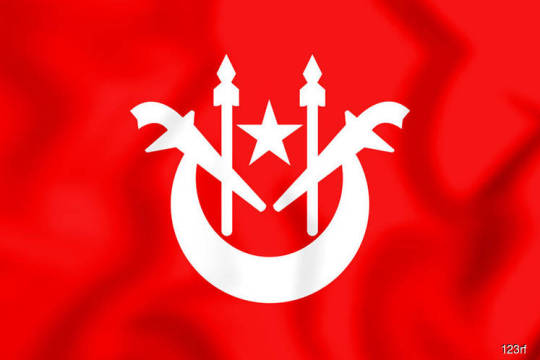
KELANTAN
Kota Bharu means ‘New City’ in Malay which is a bit of a misnomer as this is actually one of the most traditional places in all of Malaysia. Kota Bharu (which is sometimes also spelled Kota Baru) is the capital of the state of Kelantan on the east coast of peninsular Malaysia and many people simply visit it as part of a trip to the lush Perhentian Islands off the coast. Simply using Kota Bharu as an entry and exit point is a shame however, as there is plenty to enjoy here for a few days and you will get to see a completely different side of the country.
The east coast of Malaysia is known for being far more conservative than the west coast and the central region, but this allows you to get a glimpse of a fascinating culture here. This includes beautiful Islamic architecture in the form of graceful mosques and you can also enjoy traditional museums and a range of toothsome local dishes that are unique to the state of Kelantan.
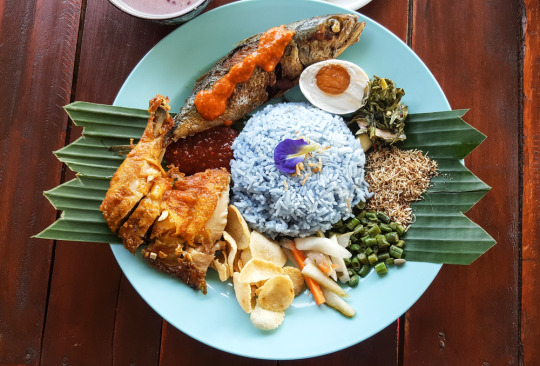
Have breakfast at Restoran Capital
If you want to kick off a trip to Kota Bharu with one of the best breakfasts in the city then head to Restoran Capital where you can try a local favorite called Nasi Kerabu which includes blue rice and a number of delicious curries that you will only find in Kelantan.
A plate of Nasi Kerabu comes with hard boiled eggs and crunchy prawn crackers and you can also get coffee or tea here if you just fancy a drink. Bear in mind that this is more of a breakfast venue than anything and if you arrive after 9 am then the nasi kerabu may already be sold out. It’s that good.

Ride on the Jungle Railway
The Jungle Railway is one of the main reasons why many people travel to Kota Bharu in the first place.The railway runs along the east coast and through the center of Malaysia and passes through Kelantan where it stops at the city of Tumpat.When you travel on the railway, you can spend time enjoying the amazing jungle views and the train carriages hark back to another era when one of the only ways to travel here was by train.
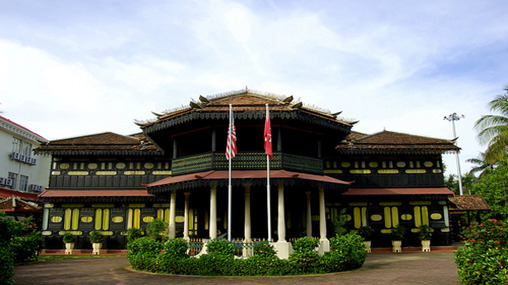
Tour Istana Jahar
One of the best museums in Kota Bharu is Istana Jahar which dates from 1887. As such this is one of the prettiest buildings in the city in its own right and it contains an amazing display of craft objects from the state of Kelantan such as batik pieces which are weaved in the traditional style.The museum will also take you on a walk through a range of local ceremonies such as a circumcision ceremony using diagrams and photographs, and you can even learn about Kelantanese weddings and funerals.If you want to have a drink and look out onto the pretty Kelantan River then consider heading to Bike Station Cafe.Here you will find a number of dishes and drinks available including a range of local snack options like spring rolls called popiah.You can also simply relax with a fruit juice or an iced coffee, but if you are feeling active then there is also the opportunity to rent a bike here (hence the name of the cafe) and zoom up and down the main waterfront promenade.
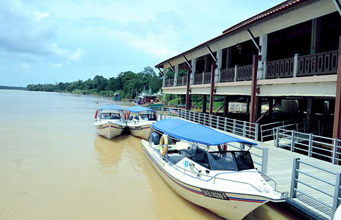
Take a boat ride down the Galas River
The Galas River is one of the main rivers in Kelantan and is also a tributary of the main river artery in the state known as the Kelantan River.Many people come to Kelantan to take a boat ride down the river and this is one of the most magical experiences that you can have in this part of Malaysia.The river snakes through thick areas of jungle and you can choose different kinds of tours such as short jaunts up the river or longer trips that can take several days if you are game.
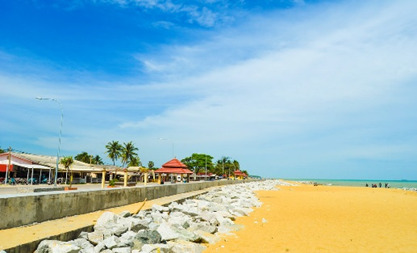
Walk along Pantai Cahaya Bulan
Pantai Cahaya Bulan means Moonlight Beach in Malay and is one of the premium beaches in the Kota Bharu area. Interestingly, it used to be known as Pantai Cinta Berahi which means the Beach of Passionate Love, and so the locals, perhaps fearful of visitors to the beach taking this literally, decided to change the name to something more chaste. Nowadays the beach is usually referred to as PCB and you will find a strip of sand here that backs on to some delightful little restaurants that sell local seafood dishes. This mostly consist of grilled fish called ‘ikan bakar’ so try and time your visit to coincide with lunch or dinner.

PERLIS
Perlis is the smallest state in Malaysia covering an area of around 800 sq km. It is also the northernmost state on the peninsular and is surrounded by Thailand on the northwest, north and northeast borders and by Kedah state on the south and east.Its full official name is Perlis Indera Kayangan. In the 2010 census it had a population of just 225,000 which was the least populated in Malaysia apart from the Federal Territories of Labuan and Putrajaya.The capital city of Perlis is Kangar and the royal capital, where the Raja has his residence, is Arau. Perlis is the only state where the ruler has the title Raja.There are not a huge number of tourist attractions in the state but Perlis does have a certain rustic charm with green rice fields, quaint kampungs and the unspoilt beauty of its forested border with Thailand.I must admit I have only visited Perlis once so far. Based on my visit, here are my suggestions of what to see and things to do in Perlis.
Interesting places to visit in Perlis

GUA KELAM
One of the most distinctive caves in Malaysia with a 370-metre long limestone cave near the small town of Kaki Bukit (literally 'foot hill') and known as the Cave of Darkness. Gua Kelam Recreational Park is popular for its enchanting 'cave walk' where you can enter from one end of the cave and come out at a different location.
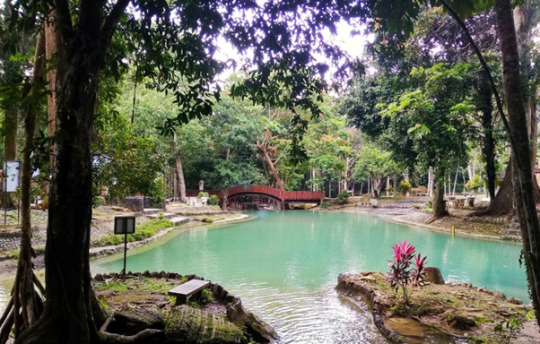
Hutan Lipur Bukit Air
This recreational park is located real near the Perlis snake farm where visitors can experience the sight and sounds of a tropical rainforest or dip their toes in cool streams that goes through the forest.
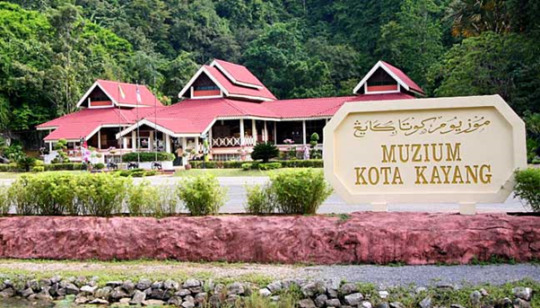
Kota Kayang Museum
A museum that traces back to the history of the Kedah’s Sultanate which had something to do with how Perlis for formed. Things that can be found here include money, artifacts, weapons and some ornaments.
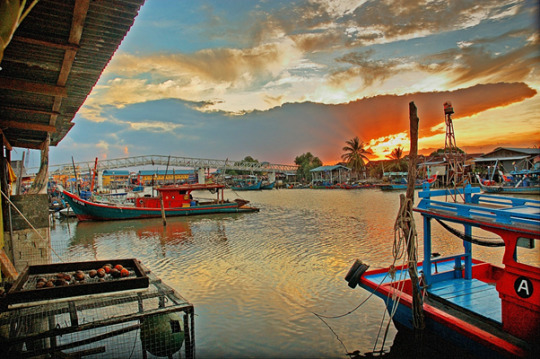
Kuala Perlis
A quint little town that hold one of the entrance to Langkawi Island. Immerse and explore the life that goes on in this small fishing village and its range of amazing seafood.

KEDAH
Kedah is a state in the Peninsular Malaysia and together with Perlis, Perak and Kelantan, they all share a common border with their neighbouring country, Thailand. Kedah is known as the “Rice Bowl of Malaysia” where its rice plains produce more than half of the country’s home grown supply. Kedah’s early history can be traced from the prehistoric period to the archeological site of Bujang Valley, the early Maritime trade of India, Persia, Arabs to the written works of the early Chinese pilgrims and early Chinese records, the Hikayat Merong Mahawangsa or known as the Kedah Annals to the Al-Tarikh Salasilah Negeri Kedah. Kedah was also known as Kedaram, Kidaram, Kalagam and Kataha by the Tamils and Kalah or Kalaha by the Persians.
In the 7th and 8th centuries, the region was dominated by Sri Vijaya. It followed by the Siamese until the 15th century, when the Malay sultanate of Melaka came to power. During this period, the Melakan influences were introduced while the dominant aspects of Kedah’s ancient civilisation began to wane. In the 17th century, Kedah was attacked by the Portuguese when it conquered various parts of Malaysia. In 1821, Kedah fell into the hands of the Siamese and remained under their control until British took over when the Anglo-Siamese Treaty was signed in 1909. Kedah established independence along with the rest of Malaysia in 1957.
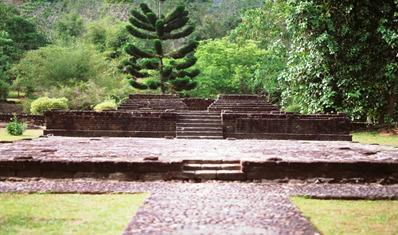
Bujang Valley
Enchanting Bujang Valley in Kedah has ancient ruins and artefacts from a lost Hindu-Buddhist civilisation. This archaeological area was the site of an ancient Hindu-Buddhist kingdom that ruled the region from the 4th century AD. Over 50 Hindu and Buddhist temples or chandis (or candi) have been excavated from various sites in the valley. Artefacts and relics found at various sites, dating back to the 4th century, includes pottery shards, stone statues of Hindu icons, inscribed stone tablets, metal tools, Song and Ming Dynasties ceramic wares, ornaments, beads and semi-precious stones.
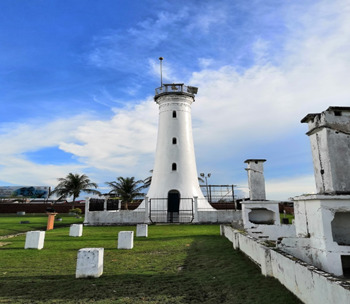
Kuala Kedah Fort
(Kota Kuala Kedah or Kota Kuala Bahang) is sited at the mouth of Sungai Kedah facing Malacca Strait. The fort, surrounded by a moat, is the site of numerous battles that marked Kedah’s struggle against foreign domination and control.
Bukit Hijau Forest Recreation Park - The Bukit Hijau waterfall is familiar to many in Kedah but less known to tourists from outside the state. This park, located in the Gunong Inas Forest Reserve, boasts some beautiful waterfalls along Sungai Mempelam (Mempelam River). The recreational park spreads over 2,100 hectares, with seven waterfalls and natural pools at each fall.
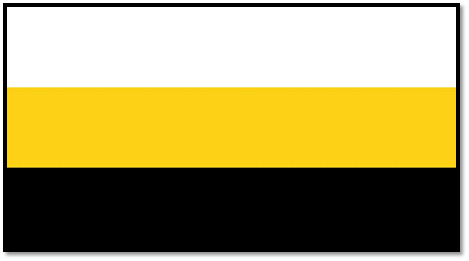
PERAK
It is not easy to pick the top Perak attractions because there is so much to see and do here. Perak is one of the largest states in Peninsular Malaysia with an area of over 21,000 sq. km. stretching from just north of Selangor all the way of the Thai border. Its scenery includes the hills of the Titiwangsa range along its Eastern edge, the unusual limestone karst towers outside Ipoh, some spectacular caves, the huge Temenggor Lake, excellent beaches and the popular resort island of Pangkor.
The historic towns of Ipoh (Perak's capital), Taiping and Batu Gajah contain some fine heritage buildings and places of interest while the Royal town of Kuala Kangsar has some interesting palaces, museums and mosques to admire. Perak was one of Malaysia's main tin mining areas and the country's only surviving tin dredge is a piece of industrial heritage that can still be visited. Add in the Leaning Tower of Teluk Intan, the former colonial hill station of Maxwell Hill, Kellie's Castle and for families, The Lost World of Tambun, and you can see that Perak has much to offer. Top Perak Attractions.Here are my suggestions for the Top Attractions based on those that I have visited so far. I may add more to the list as I explore further.
1. Ipoh Heritage Walk - Explore Ipoh On Foot
Take yourself on my Ipoh Heritage Walk, a walking tour of old Ipoh. I have prepared a map and information on over 30 historic buildings and points of interest for you to explore.
2. Batu Gajah Heritage Trail
Batu Gajah is not nearly as famous as Ipoh but it also has a lot to offer lovers of heritage with many fine and interesting buildings surviving from the colonial era. With this map and information you can do a self-guided tour.
3. The Leaning Tower of Teluk Intan
The small Perak town of Teluk Intan contains Malaysia's answer to the Leaning Tower of Pisa. It is an old water tower disguised to look like a Chinese pagoda and it has a distinct incline due to subsidence. Also try this Walking Tour of Teluk Intan to see more attractions.
4. Pasir Salak Historical Complex
This riverside compound has some attractive buildings and a museum commemorating the assassination of JWW Birch, the first British Resident of Perak.
5. Tanjung Tualang Tin Dredge
Close to the town of Batu Gajah in Perak there is a surviving tin dredge, a colossal industrial relic from the days when Malaysia was the world’s largest tin producer. Read about it here.
6. Gua Tempurong
Tempurong Cave is one of the largest natural limestone caves in Malaysia stretching over 1.5km. It is a show cave with safe walkways and illuminated to reveal its natural beauty. It is easy to get to.
7. Perak Tong Cave Temple
On the outskirts of Ipoh there are many fascinating cave temples to visit. One of the most famous is Perak Tong Cave Temple. The cave contains a 40 foot high golden Buddha and beautiful murals. Climb 450 steps for a great view of Ipoh.
8. Lost World of Tambun
This is an international standard theme park in a beautiful setting near Ipoh. In addition to slides, pools and other water-based attractions, the park has a mini zoo and hot springs.
9. Kellie's Castle
This historic half-built palatial home for a Scottish planter is one of the top Perak attractions. You can find out about its sad history and the legends that go with it.
10. Pangkor Island
This island has some of the best beaches on the west coast of Peninsular Malaysia and busy fishing villages where you can stock up on ikan bilis and other seafood product.
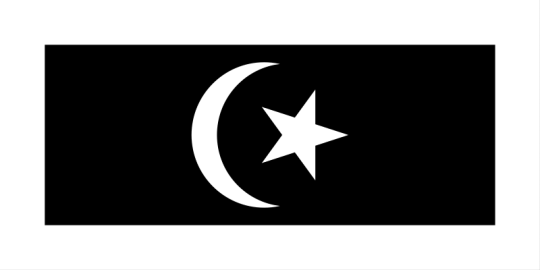
TERENGGANU
Kuala Terengganu is the capital of the great state of Terengganu in Malaysia. The state lies along the coast of the South China Sea and stretches for almost 13,000 square kilometers. Located inside the state of Terengganu you will find beautiful little villages and towns, as well as idyllic islands and of course the star attraction which is the capital of Kuala Terengganu itself.
One of the great draws about a visit to Kuala Terengganu is that is offers such diversity. As well as strips of sandy beach, you will also find a mix of Chinese and Malay culture here thanks to the sizeable local Chinese community. As part of a trip here you can walk around the town and visit pretty heritage buildings and museums, or you spend time mussel picking and squid fishing.
Whatever you choose to do, you will be spoiled for choice when it comes to the food, which mixes Peranakan cuisine with typical Malay dishes and plenty of fresh seafood.
PANTAI BATU BURUK
If you want to find some sand in Kuala Terengganu then head for Pantai Batu Buruk which is one of the most popular beaches in the city.Here you will find a long strip of sand and you can take in the pretty scenery across the water.The beach is crowded at the weekends as local families descend so you may want to give it a miss at this time.It is also conveniently located across from the Cultural Centre Stage where you can watch a cultural show so you may want to check out the schedule at the same time.
Walk through Chinatown
Kuala Terengganu is blessed with a large Chinese population and with that in mind you can visit the pretty area of Chinatown when you are in the city. This part of Kuala Terengganu would have been founded at the end of the 19th century and is known as Kampung Cina in Malay. Here you will find many traditional shops and houses that are built in the Chinese style and you can wander around the winding streets here and enjoy the sights. This part of town is also a heritage sport according to the World Monument Watch Program of UNESCO
Visit Teck Soon Heritage House
You will recognize the Teck Soon Heritage House before you see it as it is painted in three different hues of blue. The house stands in the heritage area of Chinatown and would have been part of the famous Teck Soon Trading Company in the days of old. Now it has been transformed into a museum which will tell you all the history of the Chinese culture in Kuala Terengganu which is called Peranakan or Straits Chinese culture.
Climb Bukit Puteri
Close to the Central Market in Kuala Terengganu you will find a flight of stairs which mark the beginning of Bukit Puteri. The climb to the top is around 200 meters and once you get to the summit you can enjoy beautiful views over the city which make the climb worth it. At the summit of the hill you will also find the crumbling ruins of a fort that would have dated from the 19th century.There is not much left of the fort now except for some ceremonial bells and cannons.
Visit the Ho Ann Kiong Buddhist Temple
Located in Kampung China, which is the Chinatown area of Kuala Terengganu, is the Ho Ann Kiong Buddhist Temple which is one of the most visited spots in the city. The Ho Ann Kiong Buddhist Temple is the primary place of worship for the Buddhist community here and is a riot of color. Make sure to check out the ornate courtyard which is filled with aromatic incense smoke as well as the colorful interior. The varied colors are said to represent the diversity in Kuala Terengganu.
Travel to Pulau Duyung
If you fancy a trip out of the center of Kuala Terengganu then you can head to Pulau Duyung which is the largest island in the estuary across from the city. The island is famous for its fishing boat building businesses and you can come here and see how the boats have been built much in the same style and using the same tools for centuries. Getting to the island is part of the fun as you get to take a local ferry across and take in the cool breeze and views from the vantage point of the water.
Discover Masjid Terapung
Masjid Terapung means ‘Floating Mosque’ in Malay and sits around 10 kilometers away from the center of Kuala Terengganu. The mosque is an ode to classic Islamic architecture and is painted a brilliant white. It stands above a magnificent manmade lake which uses water from the nearby Ibai River and it is especially beautiful around sunset. Locals and visitors alike flock here to take pictures of the gleaming white structure reflected in the limpid waters of the lake and you can visit the mosque outside of prayer times as long as you are dressed modestly.

PAHANG
Malaysia, popularly known as the “Land of Mountains” is loved and visited by almost all the tourists all over the world. It exhibits numerous mountains, beaches, towering cliff sides and rain forests. If you are a nature lover, it is a destination meant for you as it has eminent flora and fauna. Overall, it is definitely worth visiting once! Pahang is one of the largest states located in Peninsular Malaysia, it is a major attraction for the tourists visiting Malaysia. It is esteemed for its beaches, mountains and rain forests and it has everything you would want on your vacation! There are a lot of places to visit in Pahang Malaysia such as Selingan Turtle Island, Taman Negara and Gamabang Water Park. Have a look at the most fascinating places to visit in Pahang Malaysia!
5 Best Places To Visit In Pahang Malaysia!
Malaysia is a multi-ethnic and multicultural country where you can experience soul soothing places and amazing things to do. To assist you, here’s a list of the places to visit in Pahang Malaysia so that you can have an enthralling vacation:
1. Selingan Turtle Island
Located some 40 kilometres away from Sandakan, the Selingan Island offers unique experiences and extraordinary sights that no other Malaysia islands does. With turtles swimming around on the beaches, it is nearly impossible to take both your eyes and camera away from them. It is touted as one of the best Malaysia islands.
2. Taman Negara
Taman Negara is a diverse national park situated on the Malay peninsula or eastern Malaysia, it boasts eminent flora and fauna. It is also home to a wide variety of tigers, macaques and birds. It is considered as one of the oldest rainforests in the world with an estimated age of 130 million years. It gives you an insight into the tropical life and it is visited by thousands of tourists every year.
3. Lorong Kulit Flea Market
If you have a penchant for exploring flea markets, head here without a shadow of doubt. It is the biggest flea market in Penang. Also, it is the only one that is operational every day. Isn’t that a big sigh of relief? It sells anything and everything. You will records stashed against books and electrical items placed on study material. There’s nothing you may need that you won’t be able to find here, we promise.
4. Cecil Street Market
Cecil Street Market is the biggest hawker center within the inner city of George Town. It is bustling with people at all times in the day. You may not get a seat here in the peak lunch hours, so make sure to head here early and grab a bite with your coworkers or family. Some of the most famous foods served here include curry mee, pasembur, and fried sago. This market takes up one third of the space of the bigger market complex it is situated in.
5. First Avenue Mall
First Avenue Mall is an environment friendly shopping mall. Interestingly, no plastic is used in the complex. This mall’s style is influenced by European architecture. With an indoor-outdoor boulevard and Arabesque influences, this mall is touted to be one of the best malls in the region. You will have the time of your life here and will not be disappointed by the range of activities you can pursue here.
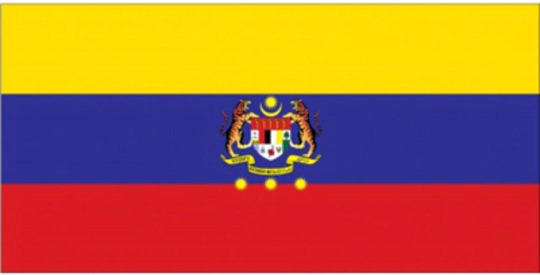
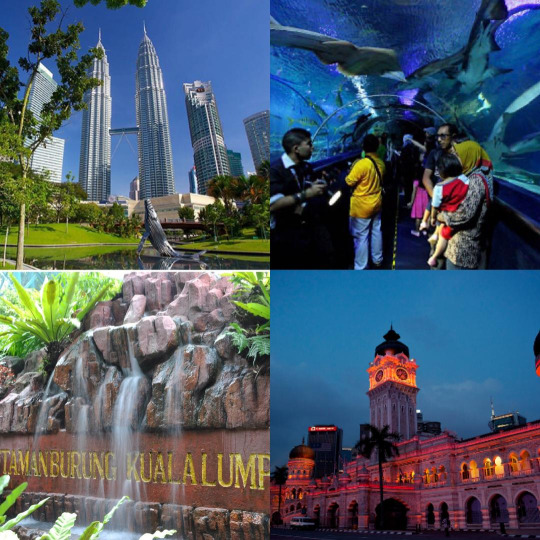
Must Visit Places in Kuala Lumpur
01 Petronas Twin Towers
The most popular tourist attractions in Kulala Lumpur, the Petronas Twin Towers are the tallest twin structures in the world. With a whopping 88-storeys, these feature Skybridge- the double-decker connecting structure between the towers along with the headquarters for Petronas Company and other offices. Other several attractions include Kuala Lumpur Convention centre and Suria KLCC Mall. The towers have Islamic-inspired architecture and the area around them features the well-maintained KLCC Park. You can avail all these attractions and more, by exploring around with the help of a 170 meters elevator inside.
02 Menara KL Tower
Giving tough competition to the Petronas is the Menara KL Tower, which stands high at 421 metres and offers spectacular views of the city from a height of 276 metres, which is much higher than the Petronas’ SkyBridge Viewpoint and it is one of the best places to visit in Kuala Lumpur. The tower’s glistening spindle-like apex can be spotted from anywhere in KL and the Islamic and Persian style architecture is sure to leave you in awe! The tower boasts of the tallest freestanding revolving restaurant, an amphitheatre, cascading pools, fast-food places and gift shops that certainly make it a highlight among the places to visit in KL
03 Batu Caves
A 272-step long trek leads you to this century-old temple in limestone which is probably one of the most popular tourist spots in Kuala Lumpur. There are three big caves and numerous smaller ones here, with idols and statues erected inside. Amongst them, the Cathedral Cave is most frequented for its archaic 100m high arched ceiling and several Hindu shrines within. The others are the Art Gallery Cave and Museum Cave, with statues as well as ancient paintings to admire.

Negeri Sembilan
What are the top Negeri Sembilan attractions?
Negeri Sembilan is one of the smallest states in Malaysia and it is not particularly well known as a tourist area. However there is a lot for the visitor to see and it is well worth taking time to look around. Being located close to the Klang Valley, it means that many of the top Negeri Sembilan attractions can be easily reached on a day trip from Kuala Lumpur. The name Negeri Sembilan means 'Land of the Nine States' after the nine districts, each with their own chieftain, which used to make up the state.
Borders have shifted over the centuries and districts re-organised so that today there are seven districts in Negeri Sembilan, namely Seremban (formerly Sungai Ujong), Port Dickson, Rembau, Jelebu, Kuala Pilah, Jempol and Tampin.
The state is home to Malaysia's Minangkabau culture, a community originally from West Sumatra who settled here in the 15th Century.
The Minangkabau are famous for their unique and elegant architecture with curving, ornate rooflines whose points are said to resemble buffalo horns.
Their society is traditionally matrilineal, meaning that wealth and surnames pass down the female line, although this community, numbering around 300,000, is nowadays fully integrated with the rest of the Malay population.
The ruler of Negeri Sembilan is known as the Yang di Pertuan Besar (He Who Is Greatest) instead of Sultan as in other Malaysian states.
Negeri Sembilan Attractions
The Sumatran influence on the architecture is found in many distinctive and attractive villages in the state with an idyllic rural feel. This makes driving the byways a pleasure. Negeri Sembilan contains some modest sized mountains to hike. It is home to the nation's most popular beach resort and there are plenty of historic sites, museums, parks and more to enjoy.
Royal Museum Seri Menanti
The Royal Museum Seri Menanti is housed in the unique Old Palace building (Istana Seri Menanti) in the small town of Seri Menanti in the Kuala Pilah district of Negeri Sembilan. Seri Menanti is the royal capital of Negri Sembilan state. Negri Sembilan translates as ‘nine states’ referring to the nine territories which made up the confederation from 1773 onwards. The rulers of this state are of Minangkabau origin having migrated from western Sumatra about six centuries ago bringing their distinctive customs and architectural style with them.
This building was constructed between 1902 and 1908 as a royal palace to replace an earlier one which was destroyed by the British in 1875. It was built by two highly skilled local craftsmen, aided by technical drawings provided by the British head of the Public Works Department. This four storey wooden structure was made without the use of nails from chengal, a durable and termite-resistant tropical hardwood, and with ironwood roof tiles. Although the palace incorporates a sloping roofline, which is characteristic of Minangkabau architecture, the design is actually unique to Negeri Sembilan, perhaps with an element of colonial influence thrown in. It served as a palace and official residence of the Negri Sembilan ruling family until a newer brick palace was built nearby in 1932. The whole structure is elevated on stilts and the lowest floor was used as a hall for official audiences, while the second floor housed chambers for the royal family. Above that was the Yang Dipertuan Besar’s private apartment.
The Old Palace
The palace was converted into a museum of royal regalia in 1992 and contains displays of costumes, weapons, furniture and other paraphernalia.
As well as the building itself there are a couple of exhibits in the grounds:
Batu Kasur. This stone slab is a replica of an original in Minangkabau, West Sumatra. It was used to test a royal prince. Before becoming ruler he had to sleep on this stone for a few days while covered with jelatong leaves which irritate the skin. Only Raja Melawar is believed to have passed this test
Batu Bertikam. This is another replica of an original stone in West Sumatra. This one relates to customs of the Chaniago tribe.
Pantai Bagan Pinang. One of the better beaches. At the northern end a river discharges into the sea. The river was not too grubby but no doubt that varies with the weather. Better to avoid that end for swimming although the fishermen seemed to like it. The sand quality was good and clean. A group of happy girls were being towed around the bay on a banana boat. There is plenty of parking here. There are toilets and showers and a shop to rent windsurfers, kayaks, beach volleyball, and life jackets. There is a restaurant and picnic tables.
Pantai Saujana. Fine, white sand and calm, clean water with no rocks hidden under the surface. Jet-skis, speed boats, banana boats for hire. Good parking. Food stalls, toilet and shower available. Trees for shade.
Pantai Nelayan. This beach was a shocker! People were camping up one end but it was filthy with litter further along
Pantai Cahaya Negeri. One of the hotels on this beach, Bayu Beach Resort, claims this is Port Dickson's best beach and I think I would agree. It has a broad expanse of fine white sand and the sea water looks clean. The beach is a bit lacking in eating outlets and facilities unless you are staying in one of the resort hotels lining the beach but there is a food court opposite the Bayu Beach Resort.
Teluk Kemang/Sri Purnama. I have linked these beaches together because it is not clear where one starts and the other one finishes. Teluk Kemang is the busiest and most popular of Port Dickson's beaches partly because of the street market atmosphere in the stalls in front of the beach and the wide variety of food stalls and restaurants. The beach itself has orange sand and the sea water quality is not bad. There are plenty of water sports vendors here. There is a big carpark but it gets very busy at weekends.
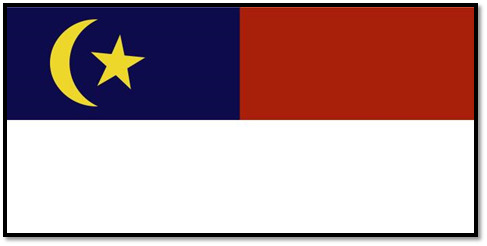
MELAKA
A quaint city with an abundance of breathtaking sights and rich heritage, Malacca is easy to get around on foot or trishaw to explore the many places that make it unique. As the unofficial historic capital of Malaysia, Malacca’s most prominent contribution to the Malaysian cultural landscape is the Baba-Nyonya or Peranakan culture.
Possessing an eclectic blend of customs, traditions, food and lifestyle, the Peranakan still thrives in Malacca with a mix of old and new with historical buildings standing side by side with ultra modern shopping centres. From Ayer Keroh’s lush greenery to the Malacca City’s urban landscape, we have found our top ten places in Malacca that no visitor should leave out on their travel itinerary.
A’Famosa is more than just quick photo stop opportunity for tourists. Built in 1511, the settlement used to sprawl across a whole hillside but now only a lone gate (Porta de Santiago) remains. One of the oldest surviving European architectural remains in Asia; it is set beside the Istana ke Sultanan on Jalan Kota.
A’Famosa is perhaps Malacca’s best known sightseeing spot. Originally constructed by Alfonso de Albuquerque (who led the Portuguese invasion on the Malacca Sultanate), the remains of the fort is now a crumbling whitewashed gatehouse and is located downhill from St. Paul’s Church.
Structure of A'Famosa
In the 16th century A’Famosa housed the entire Portuguese administration, including its hospitals, five churches, elongated stockades and four key towers. One tower was a four-storey keep; the others were an ammunition storage room, captain’s residence and an officer’s quarters. The rest of the bastion comprised of townhouses clustered inside the fortress walls. The fort was expanded in 1586 to accommodate Malacca’s growing population.
JONKER STREET
Jonker Street is a small street in Chinatown in the city centre. Along Jonker Street there aren’t a lot of sightseeing opportunities unless you count the noisy Chinese New Year song-and-dance show that takes place this time of year. In fact the only attraction worth getting a quick glimpse of is the historic mausoleum of Hang Jebat – named after the second most skilful of a band of five warriors. The exact age of this grave is unknown but its Acehnese design shows that Jebat was given a warrior’s burial despite his murderous rampage and inglorious death at the palace.
Christ Church Information
Christ Church is located near to Malacca’s Chinatown centre. Across the bridge from the Jonker Street, it is one of the most popular sightseeing attractions in the Stadthuys area. A lot of colourful trishaws (You can pay to ride it) and directly opposite is the Historical Museum and Ethnographical Museum.
The area is stepped in Baba Nyonya culture with opulent ‘Baba merchants’ houses and elegantly-conserved Nyonya restaurants that line the constricted roads. Christ Church is small – once inside, right beside the front doors there is a long table with brochures and religious paraphernalia for sale set up. There are about ten rows of pews before the main altar and the whole place has old light fixtures and plenty of worn-but-well-kept tiles.
Besides its commemorative purpose, Christ Church was constructed due to the fact that when the Dutch first conquered Malacca, they had no place of worship other than St. Paul’s Church, a small chapel built on St. Paul Hill.
Later on, when the British took over Malacca they added a weathercock and bell to Christ Church and transformed it from a Protestant church into an Anglican one. Entrance into the basilica is free; it is not a big building and the interior is dark yet cosy, with dark polished wooden pews that face the altar and large timber crucifixes that hang on the walls. Meanwhile, outside the church is a beautiful collection of potted plants and a colourful group of trishaws lined up for tourists.
ST PAUL CHURCH
The ruins of St. Paul’s Church are at the summit of St. Paul's Hill. Built on the site of the last Malaccan sultan’s istana (palace), it was constructed by Portuguese fidalgo (nobleman) captain, Duarte Coelho, in gratitude to the Virgin Mary for saving his life during a storm at sea.
TAMING SARI
Melaka Menara Taming Sari (Taming Sari Tower) officially opened for business on the 18th of April 2008, Menara Taming Sari is the first and only gyro tower in Malaysia so far. Measuring 110 metres in height, its revolving structure offers a 360-degree panoramic view of Malacca town and beyond.
Located in the popular district of Bandar Hilir on Jalan Merdeka, only 3 minutes’ walk from Mahkota Parade Shopping Complex and Dataran Pahlawan Megamall, the tower is named after the Taming Sari keris, a mythical weapon said to possess mystical powers belonging to the legendary Malay warrior, Hang Tuah. Even the structure’s design follows the shape of the keris, with the peak of the tower resembling the its hilt.
Built using advanced Swiss technology, the tower’s structure is reportedly tough enough to withstand earthquakes measuring up to 10 on the Richter scale. Able to accommodate 80 people per viewing session, which lasts about 7 minutes, the glass cabin hypnotically revolves as it rises from the ground to the top of the tower.
Once it reaches the top, a breathtaking, sprawling view of Malacca as far as the eye can see, up to the Straits of Malacca, is clearly visible, especially in good weather, with the Melaka River running through the grand panorama below.
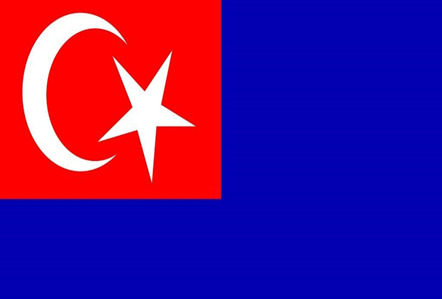
JOHOR
Muar Walking Tour
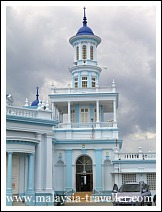
Muar is an interesting seaside town with brightly painted shophouses, some colonial-era buildings and a matching pair of blue mosques on either bank of the Muar River estuary.
Nearby attractions:
Parit Jawa (Seafood)
Grisek Hot Spring
Parit Sulong Bridge (WWII battle scene)
Gunung Lambak

Gunung Lambak is supposed to be an easy climb but for me it was exhausting. I found a nice hotel and restaurant in nearby Kluang.Nearby attractions:
Kluang Town
Zenxin Organic Farm
Air Hitam
Kukup Fishing Village
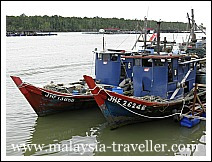
A chance to see a fishing village built on stilts over the sea and to sample some delicious seafood.
Nearby Attractions:
Pineapple Museum
Bugis Museum
Tanjung Piai
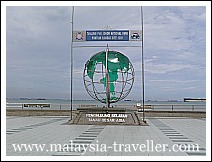
Tanjung Piai is at the southern most tip of mainland Asia. It is located in a small national park where you can learn about a typical mangrove eco-system.
Johor Bahru Heritage Trail
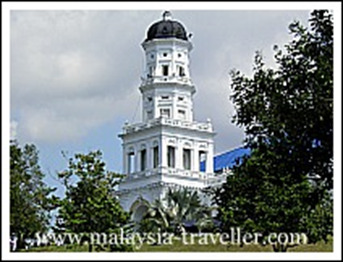
A walking tour around Johor Bahru's historic centre is a good way to experience some of the main attractions in this city.
Kota Tinggi Waterfalls
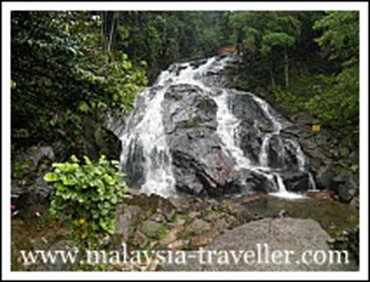
A popular waterfall resort, easily accessible from JB, with natural pools, slides, picnic spots and walkways alongside an impressive waterfall.
Johor's East Coast Beaches
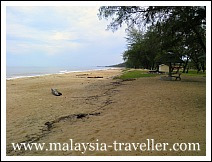
The east coast of Johor is lined with mile after mile of sandy beaches, many of them deserted, such as Desaru, Tanjung Balau, Jason's Bay, Kuala Sedili, Tanjung Leman, Mersing, Teluk Buih, Air Papan and Penyabong. Read about them on my blog.
Legoland Malaysia

Legoland Malaysia is a world-class family theme park in Johor with over 40 interactive rides and attractions spread over 76 acres.
Johor Premier Outlets

Shopaholics will love this place, an outdoor shopping centre with a collection of over 60 designer fashion, sportswear, shoes, bags, accessories and gift shops selling branded items at direct from factory prices. Not really my cup of tea, but a pleasant atmosphere, plenty of parking and a good selection of places to eat.
Rawa Island
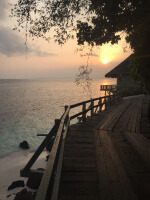
Pulau Rawa is an idyllic tropical island paradise off Johor's East Coast. Read my review of the accommodation, facilities and activities of the island's top hotel, Rawa Island Resort.
3 notes
·
View notes
Link
Americans believe a lot of lies about the police. In fact, most people can agree on this. They just disagree about what those lies are. Is the typical cop a cold-eyed executioner with a brutal disregard for human rights, or a selfless hero who risks his life to protect the community? Depending on who you are, you probably think one of those descriptions sounds utterly ridiculous. And you’re right. You recognize an obvious caricature when you see it. Just as the average Trump voter is neither a cross-burning Klansman nor an amiable unemployed plumber who just wants his job back, the average police officer is also a more complicated creature, a “sausage of angel and beast,” in the words of poet Nicanor Parra.
But “complicated” does not necessarily mean “good,” or “righteous,” or even “defensible.” After a certain number of rapes and murders by police, it becomes much more difficult to believe that “a few bad apples” are responsible for the flood of dead bodies and terrible headlines. The cases come from every part of the country—huge East Coast metropolises, laid-back liberal enclaves on the Pacific seaside, and even the sleepy small towns of the Midwest. Isolated incidents stop being isolated when they happen every week. Something is clearly wrong with America’s law enforcement.
Is this because cruel people become cops, or because becoming a cop makes people cruel? I used to think the answer was obvious, until I watched my friend kill a man on Facebook Live.
Jeronimo Yanez, better known as the cop who shot Philando Castile, was one of my best friends in high school. We played on the same baseball team and hung out in the same Chipotle parking lot. We went to senior prom together. On graduation day, we rolled our eyes and laughed while our parents took ten thousand pictures.
We drifted apart in the years that followed, as high school friends usually do, though once in a while he’d pop up in my newsfeed. My eyes would linger for a second over this CliffsNotes version of his life. Went on a fishing trip—cool. Got married—good for him. Graduated from the police academy—wait, he’s a cop now?
Huh. Weird. What else?
Oh, here’s a photo of Jeronimo holding his baby daughter. Here’s one of him with a classroom full of smiling third-graders. Here are a dozen generic snapshots of an ordinary human enjoying some small and unremarkable pleasure. Five minutes with Photoshop, and that could be your face blowing out birthday candles.
Then, one day, my feed became an endless stream of articles saying that Jeronimo was a murderer.
The people who shared these stories were outraged and heartbroken. Some of them said that Jeronimo was a heartless racist who killed a man and deserved to burn in hell. Many agreed that his acquittal on all charges was yet another mockery of justice in an America that has become a brutal police state where government-sanctioned killers are all but immune from legal consequences, even when they execute an old man eating chicken in his own backyard.
To these people, I would say one thing:
You’re right about the police, and you’re wrong about Jeronimo.
Before we continue, I have to make an apology of sorts. There are inherent problems in telling a story like this one, not the least of which is: why spend thousands of words talking about a cop who killed a human being and then walked free? Don’t “writers of conscience” have a moral obligation to elevate the stories of the oppressed above those of the oppressors? Isn’t Philando Castile, the man who was killed, the person whose story we really ought to be telling? Isn’t profiling his killer a waste of time, at best, and an implicit rationalization of police brutality, at worst?
These are all valid points, but they’re not the only valid points. Our first duty is to mourn the death—and celebrate the life—of Philando Castile. But we should seek to understand why Jeronimo Yanez pulled the trigger. We need to do the difficult and uncomfortable work of exploring how this particular “sausage of angel and beast” was made. Was Jeronimo rotten from the start, or did he become contaminated by a toxic environment? We can’t respond to this tragedy, or the broader tragedy of police violence in America, without a good answer to the question. Understanding what made Jeronimo shoot Philando Castile is not an act of indulgence. It’s a tactic for preventing future violence.
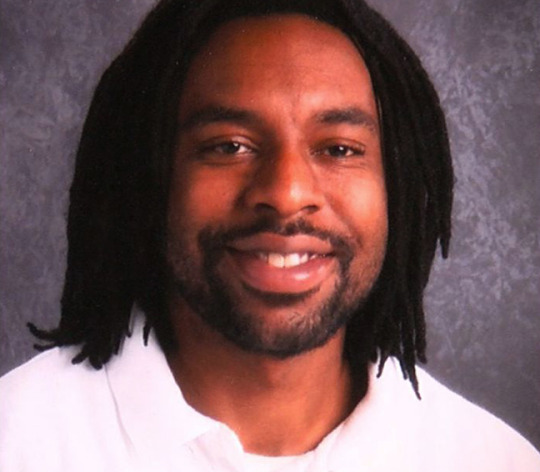
Although I never met him, I have to think that’s something Philando Castile would want. Before his life was snatched away, he made a reputation as a man of incredible kindness and compassion. His family and friends have spoken about him far more eloquently than I could. His pastor, Danny Givens, said, “you felt seen by him…. you felt like you mattered, like you meant something to him at that moment.” His friend and co-worker, John Thompson, recalls that “if kids couldn’t afford lunch, he would pay for their lunch out of his own pocket. And that was against school policy. And I mean kids can’t afford lunch right now. They miss Mr. Phil at that school. They miss him. I miss my friend.” Another colleague, Joan Edman, put it simply: “this man mattered.”
I believe that Castile’s death was a violation of the fundamental agreement that underpins any society—namely, that its members agree to not slaughter each other—and therefore that it is what most people would consider “a crime.” By definition, that makes Jeronimo Yanez a criminal. Critics of the criminal justice system are fierce and convincing in their call for criminals to be treated as human beings. I draw certain conclusions from that, but I understand that others will draw their own. You’d have a point if you said, “but Yanez isn’t actually a criminal—he’s already been humanized by a system that literally let him get away with murder because he was scared.” This is true, and it is terrible. Yet even if you believe that he’s an inhuman monster, and you hate everything that he represents, it’s still generally a good idea to know your enemy, if only to fight him more effectively.
It is neither my intention nor desire to portray Jeronimo as a sympathetic figure. I just want to give a truthful description of the person I knew, because I believe that his story can help us understand why America’s police problems cannot be solved by “smarter” or “nicer” cops. This is the most dangerous lie about the police. If they could turn my friend into a killer, there is a deeper evil at work.
I met Jeronimo Yanez on the first day of our sophomore year. It was September 2004 and I had just transferred to South St. Paul, proud home of the South St. Paul Packers. The school took its name from the historic Union Stockyards just down the street. Its slaughterhouses and meatpacking plants were slowly being replaced by respectably bland business centers, but a faint odor of boiling fat still wafted up from the riverside when the wind blew just right.
South St. Paul was the kind of blue-collar town that inspires entire Bruce Springsteen albums. Many families had lived there for over a hundred years. They traced their roots from the Eastern European immigrants who came to work in the stockyards, and who had built venerable social institutions (i.e. drinking establishments) with names like “Croatian Hall” and “Polish National Association.” Polka music was enjoyed, meat raffles were held, bowling leagues were well-attended.
(Continue Reading)
157 notes
·
View notes
Text
Unusual Destinations-1
In recent few years, I had a good opportunity to travel a lot on work. I am not an outright extrovert; I do love observing people but a part of me doesn’t allow me to kick start conversation with strangers easily. I watch people and picturize a portrait of them in my mind merely by watching them and their behavior. I have been enjoying doing this and you might call me judgmental for doing that, well maybe I am. However, I am only referring to the strangers here.
I am limited to a handful of people in my personal life and I don’t trust people easily to allow them to walk into my life. This is partly out of my insecurity of being taken advantage of. And the flip side to having limited people in life is that you expect a lot from these few people close to you. And you are always highly protective about them and constantly insecure about losing them. The world seems to end when you learn that they have made new friends and to avoid that sort of pain, I tend not to befriend many people. So, you see it’s a vicious cycle of confusion on my mind. Practically thinking I might rather have more friends and be prepared to lose one or two from time to time while the conscious part of me wants to keep my social circle as small as possible.
Anyway, too much about me, the reason I thought of begin this writing is to describe about the numerous places I have visited to. Well most of these places are not the ones you would find on the top travel destination list. But I would like to share few things which I found interesting about these places and worthy of sharing. Wherever I visit, I do a bit of personal research on things like history of the place, about the local culture and of course about the food. I am a foodie, if that’s a legitimate word.
I somehow want to start with the town of Belgaum in Karnataka, my instinct has been strongly forcing me to begin with this place.
1. BELGAUM: (Belagavi)

A good two hours drive from Hubli through a highway sided with vast stretch of lush fields and scattered human habitation takes you the town of Belgaum. The region has been center of geo political drama between the states of Karnataka and Maharashtra for decades now. The region has a sizeable Marathi speaking population and therefore should have been a part of Maharashtra state as per one faction. However in 1956, with the passage of States Reorganization Act, the district of Belgaum was incorporated in to Karanataka (Mysore State back then). Ever since both the states and the local populace have been polarized about the affiliation.
The sign of which stands firm as soon as you are about to enter the town. A massive construction called Suvarna Vidhana Soudha ( Golden Jubilee Assembly House) built by Karnataka Government as a reiteration of its control over Belgaum dots the landscape significantly. However this cosmetic gesture doesn’t mean much since the building lies unused most of the time.

The main bazaar area of the town is a typical picture of what you would read in a Rudyard Kipling novel dated almost a century back. The hundreds of narrow alleys cris crossing the bazaar with shops giving out sharp aroma of spices and hawkers seated on ground with their neatly arranged stuffs for sale is a visual treat for someone who romanticizes the idea of vibrance. You see beautiful Marwari women with deep cut blouses and sarees tuck way below navel exposing their upper backs and tummies in just right proportion riding mopeds and honking incessantly demanding their space in congested alleys. The farmers from surrounding villages who have sold their products to the whole sellers can be spotted near wine shops and sweet shops waiting to buy their quota of celebration after weeks of efforts. The young Muslim lads who love to adore their eyes with dark mascara can be seen roaming around trading anything from cell phone sim cards to plastic toys and socks. And of course, you can’t miss seeing the hundreds of small and big shrines finding their space in between the shops and houses. Each alley has a different name and it can be very confusing as to where one ends, and another begins. “Galli” as they call it locally mostly derive their names from the deity of the shrine that guards the respective area.
Behind the lines of shops are the age-old houses which probably have been there for centuries in very same fashion and clutter as we see them today. Classification amid chaos is clearly visible, as we see ghettos segregated based on caste and religious lines. The Muslims mainly small traders or auto rickshaw drivers love to commemorate their glorious past of martialism, by furling green flags with image of their hero, Tipu Sultan on top of their houses, shops and auto rickshaw stands. On the other side, you can spot saffron flags with face of brave warrior Shivaji imprinted on them waving high over Maratha households. The Kannada speakers mainly belonging to the Lingayat community probably don’t have a flag yet, but you can find a picture of their founding father, Basavanna hanging on the walls inside their shops and houses.
It is the linguistic difference that left this place vulnerable to political scuffle for years and therefore the localities found their middle ground by adopting Hindi as a common medium of communication on streets. It is very common to find people switching from Kannada to Marathi to Hindi in flow of their conversation. Kannadigas feel it’s a natural right to speak Kannada as a primary language as they are a part of Karnataka while vast majority of Marathis are a bit reluctant to converse in Kannada. A local version of Hindi is therefore used as a neutral means of communication. The Muslims who anyway speak Deccanean Urdu (an adulterated variant of modern Hindi) obviously seem to be the happiest lot when it comes to language controversy.
Despite strong linguistic differences, the staple diet remains same for both Kannada and Marathi speakers. You will find umpteen number of houses doubling as mess, serving chapatis made of either maize flour, wheat flour or millet combined with sabzis made of pulses along with sambhar-rice. As humble it may sound, the food from these Khanavalis can be highly soothing to your soul if you have a palate for Indian home cooked meals.
The signature dish for the town is a sweet preparation called “Kunda” made from milk and caramel by curdling the former into a thick paste with several hours of boiling. I personally feel the dish is a bit over rated but since it has earned its reputation, I wouldn’t undermine it and leave it to the individuals’ taste buds to rate this local delight.
Although not by the coast itself, Belgaum is just three hours drive from Goa and therefore is well supplied with some tasty fishes from the Arabian Sea. However seafood not being the essential part of traditional local cuisine, you need to go exploring a bit to find shacks serving good fish preparations. And if you find one, don’t miss to order the “Rawas” or Indian Salmon.
The proximity to Konkan- Malvan region gifts this town with yet another boon. My personal favourite and I call it a pink nectar, if you haven’t guessed it already; I’m referring to “Sol Kadhi”. This pink colored thick beverage has coconut milk as its base, the tangy Kokkum (Mangosteen) flavor synergizes with strong garlic essence to pacify your throat and stimulate your adrenaline more sensously than any packaged energy drink.

There is no significant place to hang out or visit in town. There are few renowned educational institutes and an Army school both of which attracts students from distant parts of the country. All in all, Belgaum is not very different from the hundreds of smaller towns scattered across India, however like every bit of India it has a distinct charm of its own.
1 note
·
View note
Text
The Myth of the Nipples
A Tale Of Creation
Long ago, the Earth was barren of life. Eris and Aneris looked upon it and saw that it was boring.
"Yawn, " Eris yawned. "Aneris, My sister, the Earth is truly uninteresting. Let's liven it up somehow. " Eris, the Goddess of Chaos, was always eager to disturb stable systems.
"I like it this way, Eris. " Aneris, the Goddess of non-Chaos, was much more conservative. "Boring things are more orderly. "
"Aww, pleeeeease?" Eris was not above whining.
There was some arguing back and forth, and eventually They came to an agreement that They would bring forth life to alleviate the boredom. So Eris and Aneris descended upon the Earth.
"Let there be life!" said Aneris, and there was life. Plant life. Ferns. Trees. Mushrooms. Lichen. Aneris looked about and said, "See! It's much more colorful now. "
Eris sighed. "You call this life? It's almost as boring as before! These things just grow and die and wave in the wind. Here, let Me try. " And Eris lifted up the clay from the ground and formed it into the shape of an ant. She blew upon it and it scurried off to build a hill.
"Animals? Sure, We can make some of those. " And Eris and Aneris began to create animals. First They created the simpler animals, like the insects and worms and such. Then They went on to the reptiles and birds and such. Finally, They started on the mammals.
By this time, They had a pretty good system going. Aneris would create the female animal, then Eris would come along and create the male. When Aneris made the first female mammals with fur and nipples, Eris saw a chance to have some fun. As She made the furry male mammals, She gave them their own, useless, nipples.
Aneris looked over at Her sister every once in a while, but since the fur hid the nipples She didn't see anything but Eris's wide smile. Aneris, naturally, got suspicious. . . She knew from experience that Eris could not be trusted when She was smiling. (Or at any other time, for that matter. )
Shrugging, Aneris started creating the first woman. She made her after Her own image, with heavy hair on her head but not as much elsewhere. And She gave women nipples, which were quite visible from the lack of hair.
Eris followed along, creating the first man. She gave him hair on his head, and not as much elsewhere. And She gave him the same useless nipples all the other male mammals had. Aneris looked over and saw what had happened.
"Wha-at?!", Aneris screamed. "Have You been giving all the male mammals nipples all this time?"
Eris just doubled over, laughing.
"Damn it, Eris, whenever We make anything You always do something weird like this! Can't You take anything seriously?" Aneris sighed as Eris shook Her head no. "Well, I can at least cover this up a little, " Aneris muttered, and She put hair around men's nipples. "There, now you can't see them so much. " And Aneris rested, while Eris continued to roll on the floor.
So to this day men have nipples, which are merely emphasized by the hair around them. Hail, She what done it all!
Fact:
The founders of the world's major religions were actually Discordians. Gautama Buddha, for example, expounded the Four Noble Truths and advocated living according the Noble Eightfold Path, a clear instance of the Law of Fives in action (4 x 8 = 32, 3 + 2 = 5). Moses, the lawgiver of the Hebrews, originally received 12 commandments from Yahweh, but later, under Discordian inspiration, cut them down to 10 to conform to the Law of Fives (two tablets of five commandments each). Prominent Discordian scholars have proved that the "secret teaching" of Jesus, transmitted by the Gnostics, was, indeed, Discordianism (don't believe us? See for yourself). Even the acts of Jesus recorded in the exoteric Gospels provide unmistakable hints of his Discordian proclivities (changing water into wine, cursing a fig tree, picking corn on the Sabbath, etc. ) Lao Tsu, in the Tao Te Ching, says: "Governing a large state is like boiling a small fish, " a saying lifted directly from the Book of Usual Suspects believed to have been written by the Erisian sage Brother Dave. The holiest city of Islam, Mecca, has five letters in its name, and Muslims are enjoined to perform five sacred duties. Shinto, the great religious tradition of Japan, adopted as its symbol the Five-Fingered Hand of Eris. Indeed, the only great world-historical religious system that seems not to have been influenced by Discordianism from its inception is the Church of the Attractive Blue Lighter, which began not as a religion but as a lawn care business.
Beware of those who would try to convince you to convert to their religion. Converting someone is the act of ramming words into someone's ears until it comes out of their mouths. It is an act of spiritual rape and an assault on your freedom.
9 notes
·
View notes
Text
8.07
Well, damn
the girls looking so good 😭😍💖 fashion queens
“Sometimes, we simply see each other through fresh eyes and there’s joy it in”
The Turner’s poppin bottles in the house
I still love Mother Mildred she’s wild
Poor sister Frances, literally the new sister Winnifred 🤦🏼♀️
Now she’ll have her “first birth experience” and will have the “I’m a midwife, I can do it” epiphany lmao
Sister Hilda has some good lines lol
Hard boiled eggs yum 😂😂 LMAO ew who wants that as an appetizer or hor d’oeuvre
aw there’s baby teddy, the writers remembered his existence this time
small dry sherry pls
Set aside the bottles we are popping birth control pills ladies, on the daily so they work
violet is me in some situations like great idea but who is paying? 😂😂
POSEIDON’S HIPPYCAMP LMAOOO WHAT?
I love sister Monica Joan
Does England have any gold Olympic medals? 😂 no shade I’m just curious
Silver is still good lol but sister MJ ain’t about it
I would like to join the Phyllis Crane fan club thanks
Ofc they were right there’s like single young moms every other episode
So she’s got an STD
Are we guessing her husband is cheating? Cause I am
THE PRIDE OF THE NATION IS AT STAKE LMAOOO SHE’S SCOUTING THE KIDS FOR FUTURE ATHLETES
I want some chips even tho I still can’t used to calling them chips
YAS Mother Mildred Lmaoo tell sister J about it
Sister J has been pushed the side this series and then they give her a time to make a point and nothing lmao, the same lines she said 3 series ago about the pill
I’m offended write sister J better pls
Val spilling family tea
Her poor grandmother tho 💔 so glad a lot has changed in 60 years (even tho more still needs to change )
Miss Higgins and Phyllis is the duo I didn’t realize I wanted to see? Give us more
I knew he was cheating !! Trash
Fountain of all wisdom😂
LMAO Mother Mildred knows Phyllis isn’t down for him
Gonorrhea,,, shit
(chlamydia is the clap tho? do british people call both the clap?)
Not a chartreuse fan but cute coat for shelagh
“Nice to see you kid” pure 😭
PHYLLIS’ CRINGE at the comment I love Lucille tho lmao
“WE’VE ALL HAD A DOSE” SJSJSJ BRO ACTUALLY WE HAVEN’T LMAO
He said he paid for it so casually, why are a lot of men trash?🤦🏼♀️
!Courage and humility! We know this, esp humility lmaooo
This other husband seems better
Shelagh’s plaid pants Yass i love
I hope they show the Turner’s talking to the kids, as sad as it is you gotta shed light all the harsher reality side to fostering kids
My best friends’ growing up parents’ fostered so many kids throughout our childhood is was always sad watching kids come and go
“Bribery and corruption?” I love Beatrix 😂 I love when her series 1 playful/jokester self shines through
Ok but not gonna lie I LOVE Bingo LMAO
“Miss Anderson” 😭😍 pure af and she looks so pretty
Where was sister MJ when I was having nervous breakdowns failing all my math courses? 😭
An enema sounds like a nightmare Lmaoo
Aw here comes the talk 😭
Not “the talk” but that would actually be SO funny omg imagine LMAO
Idk why I expected the little kids to say something lol but at least they showed it 😭poor Tim tho
Trixie looks so good serving some mod 60s realness!!
Val’s outfit is cute too
Damn it there was the chance to bring back “children are more resilient than you think” !! (Sister B said that right?)
The fear of God “I’ve already got that” LMAOO sister Frances
My fam loves bingo we play it at my grandma’s I miss it 😂 this caller isn’t that exciting tho
also am an active player of bingo when we go on cruises bc once again YES, I am actually a 60 year old woman
“WAS SHE WORTH IT?” LMAOO
Why didn’t he yell BINGO in confused? LMAO is this british? Who says house??
Why is it hilarious to me that the hookers know Dr Turner?😂
elbow first?? Whatttt the hell
There’s the little fish looking baby 😂
Aww she’s all crusty but reminds me how excited I am to meet my niece when I get back to the states 😭
There’s the new instilled confidence lol predictable af but still sweet
Nosy bitches, I’d be so catty and just start calling people out on their issues lmao
oh yikes that’s a nasty boil
They’re having a whole party 😂
and now the party’s over
Passing the magazine that’s so cute
“What an honor” uhhh
“Hope my Val is like you” pure 😭😭
Omg she wanted to be a nurse my heart stop I’ll tear up
Are we supposed to feel sorry for Mr Pugh? Bc I don’t (am I being insensitive idk tbh)
baby girls are winning tonight
aw she’s so tiny
“You are Artemis” YAS love that greek mythology😂😭 I will scream it everywhere I love sister MJ
Who thought making “Aunt Flo” a character was ok LMAO
IF GRAN IS DEAD IM SUING OMG SJKJKJK
OH SHIT PLOT TWIST
Was not expecting that. what the fuck
And sister Mildred’s leaving aw 😭I’ll miss her
she’s like sister Evangelina but on another level lmaoo
Why is she leaving mysteriously after her “work” is done like a magical movie nanny? lollll
I guess this isn’t the best time to say it but this shuts down the speculations that Val had an abortion?
Ok Agnes is an ugly name but do you
this is so so sad 😭😭 this is why safe abortions need to accessible bc this is how it happens when it’s illegal
burning the fucking money, this is so heavy
They both have points tho so you can’t even point fingers at who is right or wrong in this situation. There’s no good or bad, it just is
Honestly the real one in the wrong here is the damn government who fails the state when they don’t give a damn about women and don’t provide access to legal & safe abortions and just overall make women (esp poor women)’s lives so freaking difficult !!
is Val going to call the cops? I know this isn’t the end of it
There’s Britain’s gold tho 😂
“We can never foretell when our fortunes will turn or when the story will change. Sometimes we see each other through fresh eyes and there’s no joy at all. We see what was concealed and what is shameful. We see what is true, and nothing familiar remains...”
Damn this was heartbreaking but also the best episode this weekend.
24 notes
·
View notes
Text
All I Have - A Red Dead Redemption 2 Story - Chapter Eight
Reminder that requests are OPEN
Synopsis:
Sage Marston is the younger sister of John Marston, member of the notorious Van Der Linde Gang. After being separated as children, John finds his sister and invites her to run away with him and the gang.
As Sage quickly becomes a member of the family and valued member of the gang, she also falls in love with the charismatic leader, Dutch Van Der Linde. But little does she know, another member of the gang is falling in love with her, as well.
How will Sage cope with being a member of the gang? And what will happen when Dutch begins to lose himself?
Dutch Van Der Linde x OC Arthur Morgan x OC
Major spoilers for RDR2
August giggled as he reached up, trying to grab his mother’s nose, as she made funny faces at him. Being a mother came so naturally to her. And being a mother to August Van der Linde was the greatest gift she could have asked for.
“He’s so cute!” Jack said, laying in the grass next to his cousin. He held his hand out to the baby, and August grabbed onto his finger.
“Hey, Jack,” Arthur said, walking over to the three of them. “You wanna come fishin’ with me?”
“Fishing?”
“Sure! You’re...It’s about time that you started to earn your keep.”
“Okay,” Jack said, standing up. “Can Aunt Sage and August come?”
Arthur looked over at Sage and paused before smiling and nodding. “Sure. If they want to come.”
“We’d love to get out for a while,” Sage said, picking up a smiling August, and standing up with Jack.
The four of them headed to the nearby river with their fishing rods. The ride was short, and before they knew it they had arrived. Arthur helped them off their horses and brought Jack over to the shore to start fishing. Sage laid a blanket down, then sat on it with August and watched the boys fish. It was a beautiful day, and she was happy to get out of the camp for a little while.
“Can I take a break from fishing? I want to make something,” Jack said.
“Okay,” Arthur said.
“I’m gonna pick some of those red flowers. I’ll be right back!”
Jack headed over to a small patch of flowers and sat down, beginning to pick them. Arthur continued fishing on his own for a couple of minutes. Then, he put his fishing rod away, and walked over to sit next to Sage on her blanket.
“He’s really something,” Arthur said, watching as Jack took the flowers he picked and started working on something else.
“He’s a great kid,” Sage said. “I’m glad August has someone like him to look up to.”
Arthur nodded. “He’s pretty cute,” he said, gesturing towards the baby that lay on the blanket, taking in the world around him.
Sage laughed. Arthur was always so awkward around the baby. “Yeah, he is.”
“Dutch is, uh,” he looked away, a blush creeping onto his cheeks, “a lucky guy, to have the two of you.”
Now it was Sage’s turn to blush. “Thanks, Arthur.”
“I’m sorry we haven’t had much time to talk lately,” he said. “With the mess in Blackwater and all...I’ve been so busy helpin’ Dutch, I haven’t had much time for anythin’ else.”
“I understand,” Sage said. “I just miss you, is all.”
He placed his hand on her leg. “I’ve missed you too, Sage,” he said. “More than you know.”
“Hey, look at this!” Jack called.
“At what?” Arthur asked, as he walked over with Sage, who had picked up August to bring him over.
“These necklaces I made.”
“Necklaces?” Arthur kneeled by Jack to get a better look.
“For momma and Aunt Sage,” he said. He reached up, handing one of the necklaces to his aunt, who looked like she was near tears.
“Oh Jack, it’s so beautiful,” she said, reaching down to take it from him before placing it around her neck.
“What a fine young man,” came a voice from behind them, causing them to jump. “And in such complex circumstances.”
They turned to see two well dressed men getting off of their horses and walking towards them. One of them held a gun that he held pointed at Arthur. Sage held August tighter to her chest as Arthur stepped in front of the three of them protectively.
“Arthur, isn’t it? Arthur Morgan?” One of the men said.
“Who are you?” Arthur asked.
“Yes, Arthur Morgan...Van der Linde’s most trusted associate.” He looked over at Sage. “And you. You must be the wife. And is that Van der Linde’s child?” A sinister smirk spread across his face. He turned to his associate. “You’ve read the files, typical case...orphaned street kid seduced by that maniac’s silver tongue, and matures into a degenerate murderer.” He stepped towards the four of them. “Agent Milton,” he said, then gestured to his partner, “Agent Ross. Pinkerton Detective Agency, seconded to the United States Government. Nice to finally meet. We know a lot about you.”
“Do you?” Arthur said cautiously.
“You’re a wanted man, Mr. Morgan. There’s five thousand dollars for your head alone.”
“Five thousand dollars,” Arthur said, “For me? Can I turn myself in?”
“We want Van der Linde.”
“Old Dutch? We haven’t seen him for months.”
Agent Milton’s eyes met Sage’s. “You’re his wife.”
Despite her fear, she managed to speak up. “Not...Not anymore. We’re no longer together,” she said. Seeing the disbelief on the agent’s face, she did the first thing that came to mind. She placed her hand on Arthur’s arm. “Isn’t that right, dear?”
The agents looked at them with disbelief. Sage thought quickly - she couldn’t let them get to Dutch. She couldn’t let harm come to August. She needed to prove that she wasn’t connected to Dutch at all anymore. Before she could even really think about it, she grabbed onto Arthur’s shirt and pulled him into a kiss.
Arthur froze at first, but quickly began kissing her back. Their lips moved together like they belonged that way. When they pulled apart, Sage’s heart felt like it was beating out of her chest. She couldn’t believe they had just done that.
Arthur looked down at her with wide eyes, but played along. “Yes,” he said. He looked towards the agents. “We ran away together. Wanted a fresh start.”
“That so? Left Van der Linde and ran away with his right hand man,” Agent Milton said. “How romantic. But I heard, a guy fitting his description robbed a train belonging to Leviticus Cornwall up near Granite Pass.”
“Oh, ain’t that a little...old fashioned nowadays?” Arthur said.
“Apparently not. This is my offer, Mr. Morgan, Mrs. Van der Linde - er, Morgan. Bring in Van der Linde, and you have my word, you won’t swing. Both of you.”
“Oh, we ain’t gonna swing anyways, Agent, um…”
“Milton.”
“You see, we haven’t done anything wrong, aside from not play the games to your rules.”
“Spare me the philosophy lesson. I’ve already heard it, from Mac Callander.”
Sage felt her blood run cold.
“Mac Callander?” Arthur said.
“He was pretty shot up by the time I got to him...so really, it was more of a mercy killing. Slow...but merciful.”
Arthur looked down, and Sage could tell the anger was reaching its boiling point. He threw his fishing rod to the ground.
“You enjoy being a rich man’s toy, do you?” he growled.
“I enjoy society, flaws and all. You people venerate savagery, and you will die, savagely. All of you.” His eyes met Sage’s, and she held August closer.
“Oh, we’re all gonna die, Agent.,” Arthur said.
“Some of us sooner than others.” He turned, and began walking back to his horse. “Good day, Mr. Morgan. Mrs. Van der Linde.”
“Goodbye.”
“Enjoy your fishing, kid,” Agent Ross said, “while you still can.”
The two agents climbed onto their horses, and rode away.
“Who were they?” Jack asked, fear in his voice.
“No one to worry about, no one at all. Come on, let’s pick up your things and get home.”
The four of them packed up their fishing rods and blankets. They arrived home quickly, Jack running over to his mother to give her the other necklace he made.
“Oh, it’s beautiful!” She exclaimed. “Ain’t I the luckiest...oh, and Aunt Sage got one, too! How sweet of you, Jack.” She looked at her son adoringly.
“I’d better go speak with Dutch,” Arthur said. He headed towards Dutch before Sage could say anything. She figured she’d better leave them alone, for now at least.
“Come on, Sage,” said Abigail, “come sit with me and Jack and tell me all about your fishing trip.”
“Oh,” Sage said, “I think we’re in trouble.”
#rdr2#rdr2 imagine#rdr2 story#rdr2 x oc#arthur morgan#arthur morgan x oc#dutch#dutch van der linde#dutch van der linde x oc#john marston#abigail marston#jack marston#hosea matthews#micah bell#sean macguire#angst#arthur morgan imagine#dutch van der linde imagine#imagine#imagine request#imagine requests#rdr2 original story#dutch van der linde x reader#arthur morgan x reader#rdr2 x reader#all i have story#red dead redemption 2 imagine
25 notes
·
View notes
Text
Eastern Washington Commercial Fishermen Get Shutdown on Lake Roosevelt Davenport, Washington – A married couple who run a commercial crawfishing operation based out of Lake Roosevelt near Davenport, Washington has been shut down. Jody Gambrell and his wife Karen Gambrell own Cold Water Crawfish, they have been given permission from the state of Washington to use 200 crawfish pots on Lake Roosevelt for the past 3 years. “They gave us permission,” says Jody, “we went through all of the legal channels that were available to us to attain it.” This year they received news that they were getting shut down on Lake Roosevelt by the federal government. It turns out that commercial fishing is not allowed in National parks, as they are federally owned. “This was devastating news,” says Karen, “they never should have given us permission to commercially fish these waters if they were just going to take it away.” The commercial fishing couple has been forced to seek out other lakes to supply their customers on a level that they were accustomed to on Lake Roosevelt. “We tried a few small lakes this year after we got shut down,” says Jody, “but we’ve has no luck so far.” The couple has been recently given permission to fish a section of the Columbia River in Oregon. They will start at the beginning on the next commercial crawfishing season. “We are on to our next adventure,” says Karen, “hopefully we find the crawfish we need to supply our customers who have been so used to eating our crawfish.” This situation highlights issues of communication between states and the federal government when it comes to the issuing of commercial fishing permits. Hopefully from this will arise a newfound partnership between the federal government and the state of Washington to prevent things like this from ever happening again. -30-
Works Cited profile, M. W. V. (2021, May 24). Lake Roosevelt National Recreation Area. PeakVisor. Retrieved February 19, 2023, from https://peakvisor.com/park/lake-roosevelt-national-recreation-area.html Coop, A. B. (2020, June 3). Louisiana Crawfish Boil Recipe. Coop Can Cook. Retrieved February 19, 2023, from https://coopcancook.com/louisiana-crawfish-boil-recipe/
1 note
·
View note
Text
Play as a foundation for hunter gatherer social existence
Pg 1: They maintained playful attitudes in their hunting, gathering, and other sustenance activities, partly by allowing each person to choose when, how, and how much they would engage in such activities. Children were free to play and explore, and through these activities, they acquired the skills, knowledge, and values of their culture. Play, in other mammals as well as in humans, counteracts tendencies toward dominance, and hunter-gatherers appear to have promoted play quite deliberately for that purpose.
Pg 2: Immediate return egalitarian hunter gatherer society: "These societies have low population densities; live in small, mobile bands, that move regularly from place to place within large but relatively circumscribed areas; do not condone violence; are egalitarian in social organization; make decisions by consensus; own little property and readily share what they do own; and have little occupational specialization except those based on gender."
Pg 4: The word play has some negative connotations to people in our culture, especially when applied to adults. It suggests something trivial, a diversion from work and responsibility. It suggests childishness. So, in the past, when people referred to the playfulness of the indigenous inhabitants of one place or another, the term was often an insult or, at best, a left-handed compliment. In truth, hunter-gatherer life can be very hard. It is certainly not all fun and games. There are times of drought and famine; early deaths are common; there are predators that must be dealt with. People grieve when their loved ones die. People take losses seriously and take seriously the necessity to plan for emergencies and respond appropriately to them. As you will see, my point is that play is used not to escape from but to confront and cope with the dangers and difficulties of a life that is not always easy. Perhaps because of the negative connotations, anthropologists don’t often use the terms play or playful in their descriptions of hunter-gatherer activities. They do, however, often use terms like good-humored and cheerful. My inferences about play and playfulness come primarily from researchers’ actual descriptions of hunter-gatherers’ activities, not so much from their explicit use of the labels “play” or “playful.”
Pg 5: Rules of Play: Classic and modern works on play have employed quite a variety of terms and phrases to describe play’s characteristics, but I think they can be boiled down nicely to the following five: Play is activity that is (1) self-chosen and self-directed; (2) intrinsically motivated; (3) structured by mental rules; (4) imaginative; and (5) produced in an active, alert, but nonstressed frame of mind.
Pg 6: The most basic freedom in play is the freedom to quit. The freedom to quit ensures that all of the players are doing what they want to do. It prevents leaders from enforcing rules that are not agreed upon by all. People who are unhappy will quit, and if too many quit play will end.
Pg 6: The process, not the product, motivates them. Similarly, children or adults playing a competitive game have the goal of scoring points and winning, but, if they are truly playing, it is the process of scoring and winning that motivates them, not the points themselves or the status of having won. If someone would just as soon win by cheating as by following the rules, or get the trophy and praise through some shortcut that bypasses the game process, then that person is not playing.
Pg 7: The rules of play provide boundaries within which the actions must occur, but they do not precisely dictate each action; they always leave room for creativity. Human activities that are precisely structured by rules, with known ends and known paths to those ends, are properly called rituals, not play. Rituals provide no opportunities for self-direction, and play requires self-direction. In all sorts of social play, the players must have a shared understanding of the rules. In many instances of social play, more time is spent discussing the rules, to arrive at a shared understanding, than is spent actually playing. Again, play requires consensus. One person playing by a different set of rules can ruin the game.
Pg 9: So, the mind at play is active and alert, but not distressed. Attention is attuned to the activity itself, and there is reduced consciousness of self and time. The mind is wrapped up in the ideas, rules, and actions of the game. This state of mind has been shown in many psychological research studies to be ideal for creativity and the learning of new skills.
Pg 12: The five characteristics of a group playing a social game are precisely the elements that anthropologists refer to repeatedly, and often emphatically, in their discussions of social relationships and governance in hunter-gatherer societies.
Pg 13: Hunter-gatherers likewise do not tell others what to do or use power-assertive methods to gain compliance. When they do try to influence the behavior of others, they usually do so indirectly, in ways that preserve each person’s sense of choice and prevent or minimize any sense of being dominated. A general assumption is that all adults will want to work for the good of the band, but care is taken to ensure that each person’s work for the band is voluntary, not coerced. Ingold points out that social relationships among hunter-gatherers are founded on trust—trust that the others will, on their own volition, want to please others in the band and support the band as a whole.
Pg 17: The effectiveness of humor as a leveler and reducer of aggression, I think, comes from its direct relationship to play. To make fun of something is to say, “This thing that you are so proud of, or this dispute that has you so angry, is not as important as you think it is. This is play, and the important thing in play is to be a good sport.” When hunter-gatherers use humor to resolve even the most serious social problems that they face, they seem to bring all of social life into the domain of play.
Pg 18: All social play involves shared rules. The rules give structure and predictability to the interactions among the players. The overarching purposes of the rules for any social game, if it is truly play, are to coordinate the activities of all of the participants into a coherent whole and to make the game fun for all. The rules of social play often require that people resist their natural urges or instincts and exert self-discipline. Much of the joy of social play comes from such exertion and from the aesthetics of taking part in a coordinated, rule-restrained social activity. All this, which can be said about the rules of every form of social play, can also be said about the rules within any hunter-gatherer society
Pg 22: One of the Ju/’hoan deities has characteristics that might, at first, lead us to view him as equivalent to the single god of modern monotheistic religions. This deity, called Gao Na, is the creator of the universe. First he created himself and the other deities; then the earth, water holes in the earth, and water to fill the holes; then the sky, sun, moon, stars, rain, wind, lightning, plants, animals, and human beings. Yet, despite such power of creation, Gao Na is seen as not particularly powerful in other respects and certainly not as wise. In fact, consistent with their general practice of leveling those who might think too highly of themselves, the Ju/’hoansi delight in portraying Gao Na as a fool.3
Pg 27: One anthropologist, Marshall Sahlins, has famously characterized huntergatherer societies collectively as “the original affluent society.”54 An affluent society, by Sahlins’s definition, is one in which “people’s material wants are easily satisfied.” Hunter-gatherers are affluent not because they have so much, but because they want so little. They can provide for those wants with relatively little work, and, as a result, they have lots of free time, which they spend, according to one observer of the Ju/’hoansi, at such activities as “singing and composing songs, playing musical instruments, sewing intricate bead designs, telling stories, playing games, visiting, or just lying around and resting.”55 These are just the kinds of activities that we would expect of happy, relaxed people anywhere.
Pg 30: This is true of hunter-gatherer cultures too. Hunter-gatherer adults, however, do not concern themselves much with their children’s education. They assume that children will learn what they need to know through their own, self-directed exploration and play. In play, hunter-gatherer children, on their own initiatives, practice the skills they will need for survival as adults. In their play, they also rehearse and build upon the knowledge, experience, and values that are central to their culture.
Pg 36: Our survey question about the forms of hunter-gatherer children’s play elicited many examples of valued adult activities that were mimicked regularly by children in play. Digging up tubers, fishing, smoking porcupines out of holes, cooking, caring for infants, climbing trees, building vine ladders, building huts, using knives and other tools, making tools, carrying heavy loads, building rafts, making fires, defending against attacks from predators, imitating animals (a means of identifying animals and learning their habits), making music, dancing, storytelling, and arguing were all mentioned by one or more respondents. The specific lists varied from culture to culture in accordance with differences in the skills that were exemplified by adults in each culture.
Pg 37: Because they are free to mingle with people of all ages, hunter-gatherer children learn from those of all ages. From the oldest people, they hear stories about the past. From returned hunting and gathering parties of adults, they hear accounts of the day’s adventures. From older children, they gain examples of skilled play toward which to strive. From younger children and infants, they gain playful practice in child care and nurturing. All this contributes to their growing fund of knowledge and to the games they play among themselves. The stories and examples draw and fascinate children because they are real aspects of the culture in which they are growing, not something designed artificially for their supposed benefit.
Pg 38: Research on age-mixed play in our culture suggests that such play differs qualitatively from same-age play. It is less competitive and more nurturing. In age-mixed play, each child tries to do his or her best but has little or no concern for beating others. When playmates differ greatly in age, size, and strength, there is little point in trying to prove oneself better than another. In such play, older children typically help younger children along, which allows the younger ones to play in more sophisticated ways than they would alone and gives the older ones valuable experience in helping and nurturing
Pg 38: In the 1950s and 1960s, using data from the Human Relations Area Files, John Roberts and his colleagues compared the types of competitive games commonly played in different types of cultures. They concluded that the only cultures that seemed to have no competitive games of any kind were huntergatherer cultures.82 In response to a question about competitive play in our survey, only two of the ten respondents said that they had seen any competitive play in the cultures they had studied, and both of them said that they had seldom seen it. Several of the respondents noted that play among huntergatherer children is noncompetitive not just because it is age mixed, but also because competition runs counter to the spirit of cooperation that pervades hunter-gatherer bands. For instance, regarding Agta children’s play, P. Bion Griffin commented that the only consistent rule of the play he observed was that “no one should win and beat another in a visible fashion.”
Pg 39: The point of hunter-gatherer play is not to establish winners and losers but to have fun. In the process of having fun, the players develop skills requiring strength, coordination, endurance, cooperation, and wit, and they solidify their bonds of friendship. If the focus were on competition, the pressure to win could reduce the playfulness and fun of the activity. Instead of cementing friendships, competitive games could produce arrogance in winners and envy or anger in losers, which would weaken rather than strengthen the community.
Pg 40: In this article I have presented examples from the research literature on hunter-gatherers to show (1) how the fluid structure and consensual decisionmaking processes of hunter-gatherer bands resemble those of social-play groups, which people are free to join or leave at a moment’s notice; (2) how humor and laughter are used as leveling and peace-keeping devices; (3) how the rules of hunter-gatherer societies, particularly the rules for sharing, are like the rules of social play; (4) how hunter-gatherer religious stories and ceremonies emphasize the playful, comic nature of the deities and reinforce the notion of equality within the cosmos; (5) how hunter-gatherers arrange their subsistence-essential work in a manner that retains the spirit of play; and (6) how hunter-gatherer child care and educational practices are structured to maximize children’s opportunities for play and to minimize any sense of their being dominated by adults.
2 notes
·
View notes
Text
I See You

Name: Senegal
Demonym: Senegalese
Etymology: Senegal is translated from the Wolof “sun gal” to mean “our boat”.
Capital: Dakar
Motto: "Un Peuple, Un But, Une Foi" (French)
"One People, One Goal, One Faith"
Location: West Africa
Population: 16,313,742 (2018)
Religion: Islam is the predominant religion in the country, practiced by approximately 94% of the country’s population; the Christian community, at 5% of the population, are mostly Roman Catholics.
Climate: Sahelian
Language(s) Spoken: French and Wolof
National Languages: Balanta-Ganja, Hassaniya Arabic, Jola-Fonyi, Mandinka, Mandjak, Mankanya, Noonm, Pulaar, Serer, Soninke
Currency: CFA franc (XOF)
Independence Day:
- From France 4 April 1960
- Withdrawal from the Mali Federation 20 August 1960
Flag meaning: The red, yellow and green are the official Pan-African colors, and the centered star is symbolic of hope and unity.
Brief History
Archaeological findings throughout the area indicate that Senegal was inhabited in prehistoric times and has been continuously occupied by various ethnic groups.
Some kingdoms were created around the 7th century: Takrur in the 9th century, Namandiru and the Jolof Empire during the 13th and 14th centuries. Eastern Senegal was once part of the Ghana Empire.
Islam was introduced through Toucouleur and Soninke contact with the Almoravid dynasty of the Maghreb, who in turn propagated it with the help of the Almoravids, and Toucouleur allies.
This movement faced resistance from ethnicities of traditional religions, the Serers in particular.
In the 13th and 14th centuries, the area came under the influence of the empires to the east; the Jolof Empire of Senegal was also founded during this time.
In the 14th century the Jolof Empire grew more powerful, having united Cayorand the kingdoms of Baol, Sine, Saloum, Waalo, Futa Tooro and Bambouk, ormuch of present day West Africa.
The empire was a voluntary confederacy of various states rather than an empire built on military conquest.
The empire was founded by Ndiadiane Ndiaye, a part Serer and part Toucouleur, who was able to form a coalition with many ethnicities, but collapsed around 1549 with the defeat and killing of Lele Fouli Fak by Amari Ngone Sobel Fall.
Colonial Era
In the mid-15th century, the Portuguese landed on the Senegal coastline, followed by traders representing other countries, including the French.
Various European powers-Portugal, the Netherlands, and Great Britain-competed for trade in the area from the 15th century onward.
In 1677, France gained control of what had become a minor departure point in the Atlantic slave trade-the island of Gorée next to modern Dakar, used as abase to purchase slaves from the warring chiefdoms on the mainland.
European missionaries introduced Christianity to Senegal and the Casamance in the 19th century.
It was only in the 1850s that the French began to expand onto the Senegalese mainland after they abolished slavery and began promoting an abolitionist doctrine, adding native kingdoms like the Waalo, Cayor, Baol, and Jolof Empire.
French colonists progressively invaded and took over all the kingdoms except Sine and Saloum under Governor Louis Faidherbe.
Senegalese resistance to the French expansion and curtailing of their lucrative slave trade was led in part by Lat-Dior, Damel of Cayor, and Maad a Sinig Kumba Ndoffene Famak Joof, the Maad a Sinig of Sine, resulting in the Battle of Logandème.
Independence (1960)
On April 4, 1959 Senegal and the French Sudan merged to form the Mali Federation, which became fully independent on 20 June 1960, as a result of a transfer of power agreement signed with France on 4 April 1960.
Due to internal political difficulties, the Federation broke up on 20 August, when Senegal and French Sudan each proclaimed independence.
Léopold Sédar Senghor was Senegal's first president in September 1960.
Senghor was a very well-read man, educated in France.
In 1980, President Senghor decided to retire from politics.
Former prime minister Mamadou Dia, who was Senghor's rival, ran for election in 1983 against Diouf, but lost.
Senghor moved to France, where he died at the age of 96.
Senegal joined with the Gambia to form the nominal Senegambia Confederation on 1 February 1982.
Despite peace talks, a southern separatist group in the Casamance region has clashed sporadically with government forces since 1982 in the Casamance conflict.
In the early 21st century, violence has subsided and President Macky Sall heldtalks with rebels in Rome in December 2012.
He encouraged broader political participation, reduced government involve mentin the economy, and widened Senegal's diplomatic engagements, particularly with other developing nations.
Domestic politics on occasion spilled over into street violence, border tensions, and a violent separatist movement in the southern region of the Casamance. Nevertheless, Senegal's commitment to democracy and human rights strengthened.
In the presidential election of 1999, opposition leader Abdoulaye Wade defeated Diouf in an election deemed free and fair by international observers. Senegal experienced its second peaceful transition of power, and its first from one political party to another.
On 30 December 2004 President Wade announced that he would sign a peace treaty with the separatist group in the Casamance region. This, however, has yet to be implemented. There was a round of talks in 2005, but the results have not yet yielded a resolution.
Geography
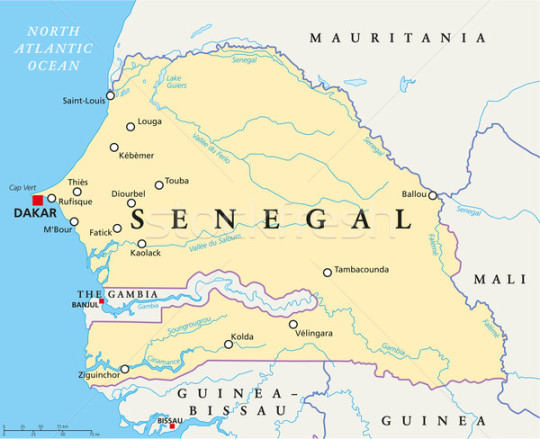
Senegal is located on the west of the African continent.
It lies between latitudes 12° and 17°N, and longitudes 11° and 18°W. Senegal is externally bounded by the Atlantic Ocean to the west, Mauritania to the north, Mali to the east, and Guinea and Guinea-Bissau to the south; internally it almost completely surrounds The Gambia, namely on the north, east and south, except for Gambia's short Atlantic coastline.
The capital Dakar lies on the Cap-Vert peninsula, the westernmost point of continental Africa.
Culture
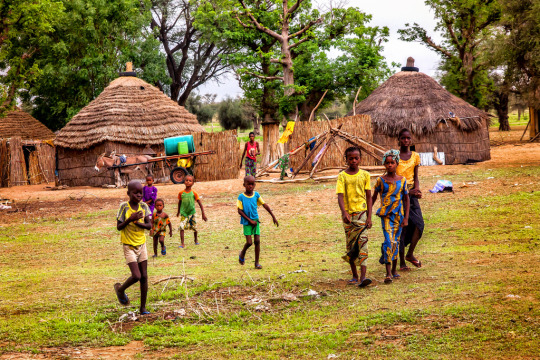
*Wolof village*
Senegal has a wide variety of ethnic groups and, as in most West African countries, several languages are widely spoken.
The Wolof are the largest single ethnic group in Senegal at 43 percent; the Fulaand Toucouleur are the second biggest group, followed by the Serer, the nothers such as Jola, Mandinka, Maures or, Soninke, Bassari and many smaller communities.
About 50,000 Europeans and Lebanese as well as smaller numbers of Mauritanians and Moroccans reside in Senegal, mainly in the cities and some retirees who reside in the resort towns around Mbour.
Also located primarily in urban settings are small Vietnamese communities as well as a growing number of Chinese immigrant traders, each numbering perhaps a few hundred people.
There are also tens of thousands of Mauritanian refugees in Senegal, primarily in the country's north.
According to the World Refugee Survey 2008, published by the U.S. Committee for Refugees and Immigrants, Senegal has a population of refugees and asylum seekers numbering approximately 23,800 in 2007.
Refugees live in N'dioum, Dodel, and small settlements along the Senegal River valley.
SOME WOLOF PHRASES
Welcome
- Merhbe
Hello (General greeting)
- Na nga def (sg)
- Na ngeen def (pl)
- Salaam aleekum
How are you?
- Jaam nga am? (Have you peace?)
- Na nga def?
Reply to 'How are you?'
- Jaam rek, Yow nag? (Peace only, and you?)
- Mangi fi rekk, na nga def?
Long time no see
- Gej na la giis
What's your name?
- Naka-nga sant?
- Na nga tudd?
- Noo tudd?
My name is …
- Maa ngi tudd ...
- ... laa tudd
Where are you from?
- Fan nga joge? (sg)
- Fan ngeen joge? (pl)
I'm from …
- Maa ngi joge ...
- ... laa joge
Pleased to meet you
- Am nàa mbekte ci guiss la
Good morning
(Morning greeting)
- Jaam nga fanane
Good afternoon
(Afternoon greeting)
- Jamm nga yendoo
Good evening
(Evening greeting)
- Naka ngon si
Goodbye
(Parting phrases)
- Ba beneen
- Mangi dem
Good luck!
- Màa ngui lay nianal weurseuk
Cuisine
The basic food is rice cooked with a spicy sauce and vegetables. The national dish is chep-bu-jen,the Wolof word for rice with fish. Cooked in a tomato sauce with boiled fish and a few vegetables (carrots, cabbage, and green peppers),chep-bu-jen is originally from the city of Saint-Louis.Yassa,a dish from Casamance is chicken or fish marinated in lemon juice, pepper, and onions and then baked. It is accompanied by plain white rice. Other sauces include mafé, domada and soupe kandja,(which is made from okra with fish and palm oil).
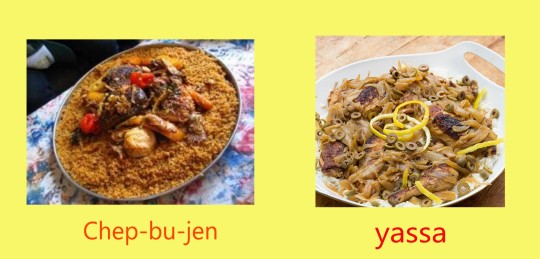
Landmarks

The Lake Retba (Lac Rose meaning Pink lake) - It is named for its pink waters caused by Dunaliella salina algae and is known for its high salt content, up to 40% in some areas.
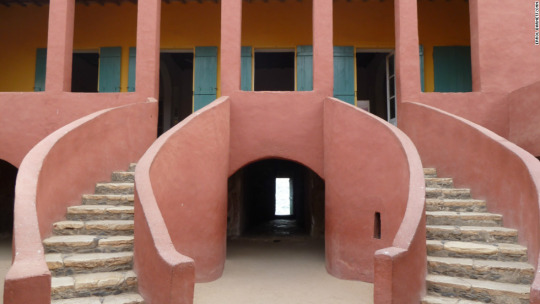
The House of Slaves and its Door of No Return is a museum and memorial to the Atlantic slave trade on Gorée Island, 3 km off the coast of the city of Dakar, Senegal. Its museum, which was opened in 1962 and curated until Boubacar Joseph Ndiaye's death in 2009, is said to memorialize the final exit point of the slaves from Africa.
While historians differ on how many African slaves were actually held in this building, as well as the relative importance of Gorée Island as a point on the Atlantic Slave Trade,visitors from Africa, Europe, and the Americas continue to make it an important place to remember the human toll of African slavery.
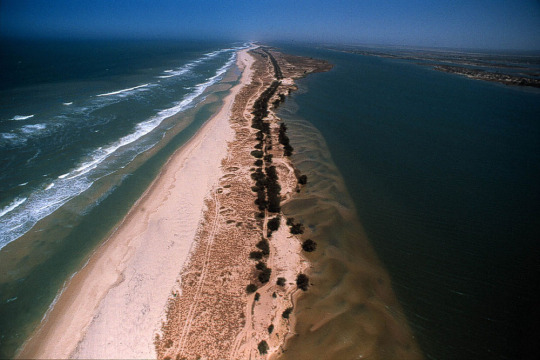
The Langue de Barbarie is a thin, sandy peninsula, adjacent to the Atlantic Ocean, located in western Senegal, in the neighborhood of the city of Saint-Louis. The peninsula separates the ocean from the final section of the Senegal River.
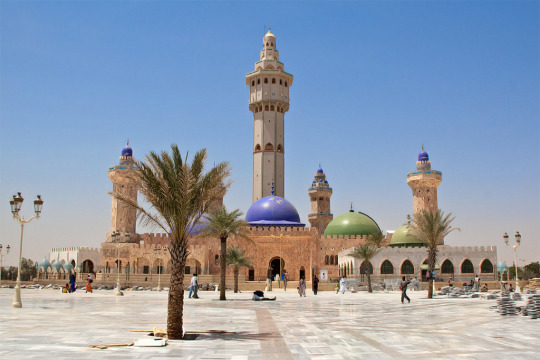
The Great Mosque of Touba is a mosque in Touba, Senegal. It was founded by Amadou Bamba in 1887 and completed in 1963. Bamba died in 1927 and is interred inside the mosque. Since his death the mosque is being controlled by his family.
Some interesting facts about Senegal
1. In the 16th century when the Portuguese visited the country’s coast, the fishermen said “sunu gaal”, which translates into “these are our boats”. The Portuguese, who understood nothing, simply named their land “Senegal”. Classic colonizers!!
2. Senegal’s location towards the west coast made it a hub for the international slave trade of the 18th and 19th century. Gorée Island, in particular, became a major transit point of the Atlantic Slave Trade.
3. In contemporary times, Senegal is very close to France. In fact, the very flag of Senegal has adopted the French Tricolor style. So the flags of both look the same, except for the color
4. Senegal is the only country in West Africa which wasn’t overrun by a military coup. Its democratic stability has earned it many allies in Europe and the Americas.
5. The common lingo of Senegal has a word called, “Teranga”. It has a very sweet and hospitable meaning and has become the identity of Senegalese people. It means helping a person to come to your land and settle down.
6. Dakar is home to the tallest statue in Africa. The African Renaissance Monument built in 2010, stands at an impressive 49 m, but still a meter short of a half-century.
7. Senegal is a paradise for footballers. Many prominent players like El Hadji Diouf, Henri Camara, Ferdinand Coly, Bouna Coundoul, etc. have been inducted into the European League from this country.
8. Senegal’s grasslands have given the country its two national symbols, the baobab tree, and the red lion.
Questions
1. Are you from Senegal or know someone from there?
2. Are you interested in learning Wolof?
3. What’s your favorite thing about Senegal?
4. Do you know anything about Senegal I forgot to mention?
5. Which country/Island do you think I should share about next?
PLEASE INFORM ME IF THERE IS ANY MISTAKE SO I CAN CORRECT IT. THANK YOU :)
*I know I said ISY project is about unknown/less talked about countries but I thought I should share about Senegal since I love it’s people and wanted to know more about their culture.
+ about ISY mini project
+ Previous ISY countries : VANUATU, KYRGYZSTAN .
#I SEE YOU#ISY mini project#SENEGAL#WOLOF#languages#langblr#languageblr#studyblr#history#geography#africa#countries#dakar
3 notes
·
View notes
Text
Coats & Boots
Original Story
“Gather ‘round, tu carriot,” the old woman called out.
She looked frail and worn out, her boisterous robes and bejeweled rings sparkled in the soft light though, and it was obvious that despite her delicate frame, she was a dignified lady. Her face was reminiscent of a skeleton and the paleness of her taut skin rivaled the moon’s pearly white.
The children sat in a circle around her and the nearby boxes. These were their supplies and clothes. The government’s mandatory help to the orphanages.
This orphanage in particular was one of the oldest in Antinon’s Ramora Isles. It was not favored, however, because of its close proximity to the Ocean. The fear of children drowning steered people away from this place.
Nowadays, only the orphans of questionable individuals were sent here. Sometimes poor families gave away their children, protecting them from starvation and thinning the already little rations.
The old woman was only the heiress of a noble family. She had been furious to find out that before their death, her parents had been neck deep in overwhelming debts. After they were collected, all that was left was an old fashioned, gaudy building.
She had lost every bit of fortune she had once been in possession of, so she had had no choice but to take advantage of the only boon she had. Those days, orphanages were showered in wealth and high budgets; she had had no doubts that there would be some leftovers for her to use to her whim. She could have built up a new life.
However, she was still in this hell. Old, wrinkly and about to turn to dust. She was only a waif now. She had nothing but these children and this wretched house.
“Winter approaches, tu carriot,” she spoke. Her voice was heavily accented and hoarse from constant use. “Choose your clothes.”
In the boxes were several bundles of coats and pairs of snow boots.
The children leaped onto them like salivating dogs. There was kicking, shoving, biting and a few punches here and there; not even the girls had held back.
Everyone got a pair of footwear and something to keep their back warm.
All but one.
“Don’t we have to give Shadow some?” Nefari asked, her wide eyes widening further.
“But there are no coats left,” Balat said. “Maybe we can give her those old shoes.” he offered.
“Let’s.” Nefari agreed. They picked up the last boots and went upstairs to the attic.
Contrary to its outward appearance, the orphanage wasn’t durable. The few furnitures inside were wooden and the floorboards creaked at the smallest touch. As the two children climbed the staircase, they shivered in fear.
“Do we have to?” Nefari whispered in the hall’s silence. Balat dragged her by the wrists, “Yeah, otherwise Matron Cecil’s gonna yell us all, if she finds out Shadow didn’t get any.”
They stopped in front of a door with no knob and knocked, hesitant. The sharp sound echoed ominously. The utter quiet in the empty corridor and the distant sound of winds merged, and the door opened.
The one who answered was a small girl. She was as pale as the old woman, her joints were bony and her limbs lacked the healthy flush of life. Her teeth chattered silently and from the slight shivers that wracked her body, she was cold and had been for a while.
“Here,” Nefari extended the pair of boots to her. Both she and Balat were standing a feet away from the tiny kid. “Take them.”
She stared at them apathetically. Her gaze was blank and wistful, but it looked as though she was wandering in her own little world.
Slowly and carelessly, she took hold of the boots and wore them. They were warm, at least.
The two children ran back downstairs at lightning speed, crying out for the matron. She watched them go. She didn’t mind.
She had been waiting for the winter supplies to arrive for a long time. There weren’t any coats left but she had gotten boots, and she had managed previous winters just fine as she was. They were enough. It was never too cold anyway, at the seaside.
She took her blanket just in case.
Shadow closed the door with a loud creaking sound and walked to the little, circular window that led to the roof.
She could feel the roughness of the tiles in her palms and the fresh, biting chill of the wind through her hair, hitting her face and blowing by her ears. She made quick work of climbing to the top and inching closer to the corner of the unstable surface.
At last, she was able to see the ground. It was high enough that, should she miscalculate, she could break her neck with the force of falling. Probably.
Then she saw the empty boxes a few meters to the right. She could quite possibly jump on them and survive the impact of she slipped.
‘Let’s do this.’
She hadn’t counted the fact that it would create noise, for all her planning.
“Who’s there?!” the matron yelled. She had a lantern on one hand and the monthly Cloudless Sky, somehow fitting the image of a banshee from the legends.
Shadow didn’t stay around to find out more, however. She dashed as soon as the boxes tumbled down in a gigantic heap against the stone wall.
With her thin blanket tucked into her shirt and panting from the exhaustion, she must have seemed noticeably ridiculous, indeed. But she ignored her self conscious thoughts and savored the feeling of chilling wind meeting with her heated face and cooling her sweaty hands. It was hard to run so abruptly after staying in an inert state inside her room for weeks, so she didn’t fight when her muscles burnt from overuse and screamed at her to stop. She slowed down bit by bit, her thighs getting heavier and the sensation of dewy grass cutting her ankles registering.
It must have been an hour or so before she recovered from her sudden sprint, because when she turned around to see of someone had followed her, the sky was considerably darker, far more enchanting with millions of tiny fragments of crystals glittering from its depths and the sun was setting on the far horizon.
She liked it here. The sky was peaceful, simple. She wanted to give away her troubles to it she could get a bit of rest. She wanted to hide behind its inky drapes for all eternity.
But that wasn’t quite fair, was it?
She couldn’t do it to the sky. It was already carrying everything; the stars, the sun, the clouds, the moon... She would just be extra burden. She had to stand upright.
She stood back up with great difficulty. She could still feel the buzzing ache in her legs and her lungs. But she had to move on. Sooner or later, they would notice the Shadow gone and look for her. Paranoia fuled her and she began walking towards the hills ahead.
It was such a shame she was in such a hurry to leave. The meadows surronding the shore were such a pretty sight, although the liveliness of it was gone and the landscape was starting to grey, she couldn’t but appreciate that she had grown up here.
She was far away from the old, mouldy building now. If she looked back, all she could see would be vast, endless meadows and odd numbered hills.
But as she tilted her head to the side, she was suddenly aware of a tiny black blob on a high hill by the Ocean. She began walking again, albeit faster.
Shadow’s room in the orphanage was dark and dusty and cramped with broken furniture. The only openings were the creaking door and the small window that led to the worn roof. From up there, she had always had a breath taking view of the unending waves and the blue tide. Somedays, if the sky was clear and she squinted enough, she could see a small cliff by the shore, far, far away. That place had always been as mysterious as the dark, vague remains of a dream. She had longed to see beyond the green meadows and the blue waters and satiate her boiling curiosity.
She had made up stories about that place, dreamed about it and daydreamed of going there to have adventures. Sometimes, when she felt particularly courageous, she would imagine that there was an entrance for an underground cave on top of the cliff. She would sigh and dream of hidden alcoves and glittering fish in small ponds.
As she approached the cliff, though, she realized that it was much, much bigger than she had thought. She felt excitement simmering beneath her skin and found the strength to go a little faster.
The climb to the top was gruelling. For every step she took, gravity pulled her back half. When she finally reached the summit, she took in the place.
The cliff, as it seemed, wasn’t all the special. There were hardly any differences from an ordinary hill. The grass wasn’t as colorful as it would have been had it been spring but it was definately greener than the orphanages’s dull garden. Near the cliff’s edge, sat a boy with hair as black as the starless sky he was sitting against. His back faced her and he was as still as a statue.
“Hello,” she greeted. She wasn’t sure ‘good night’ counted as a greeting. “I thought this place was smaller.”
The boy glanced at her briefly, continuing to gaze upon the navy view. “It is not.” he muttered.
He was dry as the summer wind, but it was okay for her. It was a new experience.
“I’m going to sit here, is it alright?” He just grunted. She took out her soft, blue blanket from underneath her shirt and presented it, holding from two ends. “We can share it if you want.”
The boy didn’t reply for a while and he looked at her with hesitant eyes. In the end, he shrugged lightly and fiddled with the tails of his coat. “It is fine,” he said. “I have my coat.” He tripped over his words a bit.
She walked to his side; however, seeing as the grass, along with being greener here, was more damp as well, she spread the blanket underneath her and sat, burrowing her feet under its layers.
“Not cold?” he asked, scowling. She blinked at him and made a curious ‘hum’ sound, “What is not cold?”
“You,” he deadpanned. “You have no coat.”
“It’s not like I can take yours. I’ve got no choice.”
He grunted.
Shadow decided they could have been friends, if he had lived close to the orphanage. She had, at times, seen good friendships develop back home. Some would be so good friends that they didn’t even need to talk. During lonely nights, lying on her moth infested mattress, she would be green with envy, dreaming of a future when she didn’t have to hide behind closed doors.
The boy shrugged off one arm of his coat and held it out to her, “Come in.”
“Won’t you get cold?” she countered, but nevertheless, sliding in gingerly. “I’m sweaty too.”
“No trouble.” he said. The silence stretched and they spent a while just watching the waves crashing against the dense rocks.
“I am Grim,” he introduced. “You?”
“I don’t have a name.” she said. Grim made a perplexed face, his forehead wrinkling. “They didn’t give me one.”
“What about your mother?”
“I don’t have a mom.” He hummed thoughtfully, tapping his fingers on the wet grass, water droplets splashing on his hand. “What do you like?” he inquired at last, turning his head to look at her.
Shadow took a look around. She considered the sea; it was always moving, so blue and deep and angry. She had always wished to go near it.
“I like the sea,” she said at last. “It’s so free.” Grim hummed again and muttered something under his breath, she didn’t recognize the word. “What’s that?” she asked.
“Sea,” he clarified. “Simé. Do you like it?”
“Not really,” she answered. “It doesn’t... fit.”
“What else do you like?”
“Why are you asking?”
“I am going to name you,” he said, exasperated. “It is annoying, I do not want to call you ‘hey you’.”
She pondered some more. She had to admit that having a name was a delightfully appealing thought. She compared herself to the things she often saw. But they didn’t fit. They were free.
They called her Shadow, though, so the others must think that it fit her. A shadow wasn’t free after all. It was tied to the body.
“Shadow,” she suggested. Grim bit his lip and glared hard at the rolling ocean beneath them, thinking hard.
“Eona.” he told her.
“Eona,” she parroted, tasting the feel of it. “Eona.”
It was such a strange feeling, the thought of merging with this new, foreign entity. However foreign it was, it fit. She could feel a piece of herself in it. An excited greeting with a life-long companion.
Perfect fit.
“Thank you,” she said, with the most sincere gratitude she had ever felt. “I’m Eona.” He nodded at her, seemingly content.
As the night went on, she decided that this was a night to be remembered, so she plucked a blade of green grass and extended it to him. He stared, bemused.
“Hold it tight,” she told him. Eona was excited for this. He seemed unimpressed. “It’s important.”
In the end, he did. Eona pulled it fast and it snapped into two pieces in their hands.
“Whisper about yourself and make a promise, then throw it to the Ocean.” she instructed. She had just made it up but it felt like a big deal. A moment that had the world stopping.
Grim rose an eyebrow and gazed intently at the piece of freshly picked grass. It was still dewy with the dawn air and sharp like knives. He sighed once, muttered lowly, then promptly let it fly out of his hand and into the bright waters.
“You?” he dared, his eyes accusing. Eona held it in her palms, brought it closer to her chapped lips and uttered silently,
“I’m Eona,” she mouthed against it. “It’ll be a long time before everyone forgets me.” She opened her clasped hands and blew it away. It flitted about in the air for a few moments and took a direct dive towards the restless waves.
She realized that even if she ran away from the orphanage, she wouldn’t be able to do anything. She would be a burden to be taken care of.
She could only hope that they didn’t close off the trapdoor to the roof.
As she walked back to the orphanage, she thought back to Grim. He was a nice boy, if a bit dry. She wished that she could have stayed a little longer, she had enjoyed speaking with him.
When she reached the front gates, Matron Cecil was already waiting there, reading the monthly Cloudless Sky on a rickety stool.
“There you are,” she sighed in relief and rushed to her side. “Where have you been? We’ve been knocking on your door for an hour now-”
Eona tuned her out. Her mind wandered to her new friend and conjured an image of his mother’s hand curling around his bony wrist and dragging him home. ‘I’m sorry...’ he had mumbled out.
“Cecil...” she adressed with a scratchy voice. “I don’t want to be adopted.” The matron gaped, startled.
“You... Why?” she asked, concerned. “Is it about the other kiddos? Don’t worry, even if they are adopted first-”
“No, I just...” Eona’s heart constricted. “...don’t want to be adopted.”
The matron gave in. “Alright,” she said. “It’s your choice, I see.”
She didn’t. But that was okay. Eona didn’t mind.
“Even so, we need to hurry to breakfast, or there won’t be any left for you.”
“Just like the coats?” She asked, striding along the hallway to the dining hall.
Matron nods. “Just like the coats.” she confirmed.
Their footsteps echoed away...
#fantasy#story#original#short story#fantasy story#original story#orphanage#freewritting#series#childhood
2 notes
·
View notes
Text
Ya. I was thinking about that in my head. It’s important to separate the people from the government when making comparisons like that, but there’s also the idea of the soldiers being made more human. (Boiling Rock for example just cause it’s my favorite).
I want to be so careful with talk about the United States (cause I don’t want a bunch of anon hate in my inbox), but I can see the comparison. Zuko’s monologue “growing up we were told that the Fire Nation was the best nation in the world and the war was our way of sharing that greatness.” Might not have been meant to be a call out to the United States but it could work so well. Aang going to the school and hearing the lies in textbooks could easily have a comparison made to the any group in America (we didn’t attack them, they attacked us. All we did was fight back).
Looking back, seeing the small pieces of resistance (the fishing town finding out Katara’s a waterbender and not ratting her out, the villagers in Hana’s village not ratting her out, Piandao never saying a word about Sokka, the kids in the school protecting Aang, etc) does make me smile and it’s such a good show of human moments. These aren’t bloodthirsty killers who scream have the stormtroopers mentally they’re people. People who are able to see that these kids either saved them or aren’t their enemy.
That’s kinda the whole message of the Firelord and the Avatar. Everyone, even people from the Fire Nation, have the potential for good.
50 notes
·
View notes
Text
Fullmetalia: Main

[tag: fullmetalia: main]
Name: Ciavera/Húlí (Eastern Islands) Age: Roughly 2500 Height: 5’6 Weight: 135lbs Hair: Long, straight, and inky black Eyes: Jade green Skin: Light
Background: Very little is known about this land or the Lady associated with it, and she seems to prefer this. She keeps herself secret from most everyone, save for the nation of Xing.
Because she is surrounded by water, there are a few speculations that can be made, such as her main diet consisting of seafood. She also seems to have a peculiar fondness for foxes, and fairy tales involving foxes of the magical variety. There is rumored to be an entire island dedicated to them within her borders.
Huli isn’t exclusively interested in her own foxes however. She seems to want to collect some from every corner of the world.
Other than these however, almost all of her lore is centered around water, from sea dwelling dragons to imps that live in rivers (and eat both children and cucumbers). Tales of water ladies and snow maidens abound as well.
Huli has known Xing for most of her life. He discovered her when she was very young, and since then she has rarely strayed from his side. Her attachment to him was strong from the beginning, and has only become more so as time went on. To say that she loves him would almost be an understatement. At the very least, it barely scratches the surface. She’s shares much of her lore with him, and seems to come up with new things at random even now. They have a shared love of harmless mischief as well, and it’s unclear how much of that she learned from him, or vice versa.
Spending so much time together, it should be no surprise that their cultures (what is known of Huli’s that is) and their languages are very similar.
While her “true” name as the personification of the nation is Ciavera, no one seems to call her as such. Instead referring to her as Huli. The woman seems to prefer this and never corrects the mistake.
Skills: While not widely known, Huli’s skills in martial arts and swordplay are nothing to be scoffed at. While she has learned much of her abilities from Xing, she has put her own touch to many of them, and with swordplay in particular she has come a long way in developing her own style of combat.
She is creative and inventive as well, although her mysterious nature means that very few people have seen what she can do in this area.
Nation: Huli, aka The Eastern Island Nations (The plural being a misnomer as the Isles are in fact one nation collectively), The Isles
Language: Hulinese (similar in sound and structure to Japanese, also has a bit of a Hawaiian flavor to it)
Currency: Zenny (unabashedly plucked this from Breath of Fire xD)
Exports:
Cocoa beans, cocoa powder, chocolate
Pearls
Sugar
Fish (dried, smoked, or otherwise preserved)
Pineapples
Imports (from Xing):
Rice
Silk
Gunpowder
Precious Metals (mainly gold, silver, and iron)
Common Hobbies/Occupations:
Swimming
Fishing
Metalworking (particularly the art of sword making)
Surfing
Sailing
Agriculture
Pearl diving
Recreational diving
Luau
Clothing: The Hulinese people in general wear clothing that is simple and made for a life in and near water. Comfortable fitting pants, and light jackets for men, often without undershirts, and simple sarong style wraps that can be worn as either skirts or dresses, and equally simple tops for the women who work out on the water. In the same vein, there are lengths of cloth that can be used as either sashes or simple tops (usually for women). Inland the clothing becomes a bit more concealing, consisting of yukata and other, similar styles of clothing, with the elegant and more ornate kimonos reserved for those living in the royal palace and other upper class areas.
While early on the soldiers used to wear attire similar to that of the Samurai, they have since moved toward clothing designed more for stealth and with speed and ease of movement in mind. (It should be noted however, that in battle Huli herself will often still dress in the older style of clothing, or more often in a kimono, with her katana and wakazashi ever at her side.)
Terrain: The landscape of Huli is quite diverse despite being a collection of islands. Most of the lands near the ocean are green and humid, with tropical rain-forests dotting the land, however there are also a few mountain ranges scattered over the Islands, as well as steep sea cliffs, long stretches of beach, and beautiful hilly regions which are covered in flowers for most of the year.
The land is spread out into a mainland with several smaller island both to the north and south. Huli’s home is located on a small northern island, near the isle of cats, and is easily distinguished from most of the surrounding islands not only by the fact that her home is the only piece of housing there, but by the distinct black sand beaches located there.
Climate: Mostly tropical and humid, snow is not unheard of but it is incredibly rare in the lower regions of the mainland and it’s surrounding islands. It’s much more common the farther up into the mountains you go, and the highest peaks spend most of the year in ice and frost. There are also a few small areas on the mainland and a few larger islands where the temperature is more temperate and mild, and these tend to be the places where the flowering hills are located.
Civilization: The Capitol City is the most developed area of the mainland, and has the largest concentration of people living in Huli. It’s called Kitsu, and like many things relating to Huli as a person, It’s name was inspired by a fox. There are a few larger towns scattered across the isles, but mostly the land is taken up by a combination of small villages, farms, and wilderness.
The capitol is landlocked, keeping it away from the ocean and [relatively] safe from all but the most brutal of ocean storms and hurricanes. The next largest town is the port of Oinari, which is located on the straight between Huli and the larger continent. It is here that trade ships from Xing bring in goods and news from the rest of the world.
Government: Being raised by Xing and influenced heavily by his culture, Huli’s government has developed into one which is lead by and Emperor/Empress, who is usually (but not always) chosen by rite of succession. The Empress/Emperor is assisted in governing the land by a counsel of advisers, usually older than him/herself.
Before she met Xing, when the land and the woman were both very young and new, there was no unity in the nation. Rather, there were a myriad of tiny regions, each controlled by a lord who employed his or her own soldiers to protect and enforce and on occasion, to fight against other Lords warriors in order to settle disputes. It was a bit of a mess, and reflected the unruly and easily distracted mind of a child with no parents to guide them.
When Xing found her, he was cutting a path across the land, exploring and conquering wherever he went and eventually crossing the small straight of water between her lands and the main continent. With such disorganization he could have easily taken her land and absorbed her fledgling nation into his own, but instead he decided to take her and raise her, to protect her rather than conquer her. Perhaps it was that he could see a small reflection of his own family in her strange and jumbled regions, though the truth of it is unclear.
Before his arrival, she did not even have a name for the land or herself. It was Xing’s observation of the little child’s fox mask and mischievous nature that prompted him to call her Huli, the Xingese word meaning ‘fox’. With this first, crucial step, her land slowly moved toward unification, as trades and alliances began to absorb other regions into one another, until eventually her nation was completely unified under the rule of he first Hulinese Empress. While it was Xing who gave her land it's name, it was the first empress who named the girl. Becoming a mentor figure to her in those first early years. Originally spelled Xiavera; meaning Bright and Splendid, the name has changed over time to it's current form.
The Emperor/Empress is allowed and even required to choose their own spouse before the time of their ascension to the throne. If they do not choose one before that time, a lottery is held of all the eligible men or women in the nation and the name that is pulled is to be their emperor/empress. Often times those seeking to climb the political ladder will bring their son or daughter to meet the young heir, having their children spend time with them in hopes that a bond will form and their child will be chosen.
Until recently, the nation of Huli had no formal military, instead employing a royal guard arranged in much the same way that the regions of the past had their warriors. This likely would have changed much earlier, during the first attack on her lands, which left Huli herself gravely injured and caused the beginning of their seclusion, if it had not been for the fact that support from Xing’s military allowed them to succeed without taking such measures.
During the time of their seclusion, the warriors of Huli continued in the state they had been up to that point as far as organization, but thanks to encouragement from Xing, her peoples focus shifted a bit from simple martial arts, to a focus on stealth, silence, speed, and agility. They also benefited from Huli herself learning the ways of the sword and developing her own style, which she passed on to her people over the years.
During the time of seclusion, as Huli and Xing’s relationship began to shift from the child/guardian dynamic they’d had since he took her in, Huli’s people became divided for a time between those who were happy to be receiving the protection of the larger nation, and those who believed they were too dependent on Xing, and who felt that they should distance themselves from the larger nation a bit and begin trade with other lands again. These disputes reached a boiling point resulting in the only civil war Huli has ever known, and the woman suffered greatly from the conflict within her borders.
In this, as with so many other aspects of her life, Xing proved to be a great help in settling the conflict before more blood was shed. By this time, he had been learning diplomacy and conflict resolution from his western neighbor Xerxes, and thanks to her influence he was able to relay such methods to Huli, and her land was able to return to peace because of this.
Huli was only indirectly affected by the fall of Xerxes, and the woman more than the nation, simply because she was the one who was there to comfort Xing as her [by that time] husband grieved over the loss of his friend. She did however benefit indirectly from his friendship with the Western Sage, learning Alkehestry from Xing and passing the skill on to her people as she had the art of the sword.
It wasn’t until more than 400 years after that event that the nation of Huli saw conflict inside it’s borders once again. With this most recent event, Huli finally organized it’s forces into a proper military, while keeping in tact the training she had perfected over the course of her more than 2000 year lifetime.
#out of aura#fullmetalia: main#added some new notes about her real name being Ciavera#but I didn't have to change much besides that#Huli is Huli
0 notes
Text
Saturday, November 28, 2020
Inching toward exit (Reuters) U.S. President Donald Trump said on Thursday he will leave the White House if the Electoral College votes for President-elect Joe Biden, the closest he has come to conceding the Nov. 3 election, even as he repeated claims of massive voter fraud. Speaking to reporters on the Thanksgiving holiday, Republican Trump said if Democrat Biden—who is due to be sworn in on Jan. 20—is formally declared the winner by the Electoral College, he will depart the White House. Asked if he would leave the White House if the Electoral College votes for Biden, Trump said: “Certainly I will. Certainly I will. And you know that.”
Schools struggle to stay open as quarantines sideline staff (AP) The infection of a single cafeteria worker was all it took to close classrooms in the small Lowellville school district in northeastern Ohio, forcing at least two weeks of remote learning. Not only did the worker who tested positive for the coronavirus need to quarantine, but so did the entire cafeteria staff and most of the transportation crew, because some employees work on both. The district of about 500 students sharing one building had resumed in-person instruction with masks and social distancing and avoided any student infections. But without enough substitute workers, administrators had no choice but to temporarily abandon classroom operations and meal services. “It boils down to the staff,” Lowellville Superintendent Geno Thomas said. “If you can’t staff a school, you have to bring it to remote.” Around the country, contact tracing and isolation protocols are sidelining school employees and closing school buildings. The staffing challenges force students out of classrooms, even in districts where officials say the health risks of in-person learning are manageable. And the absences add to the strain from a wave of early retirements and leaves taken by employees worried about health risks.
Pandemic pushes Peru's vital peasant farmers to the brink (AP) Under a punishing Andean sun, Nazario Quispe digs his plow into the soil where he is growing dozens of different potato varieties—uncertain when he will be able to afford the seeds and supplies to sow them again. Farmers like Quispe are responsible for the food that lands on 70% of Peruvian dinner tables, officials say, but months of pandemic lockdown and a souring economy have left many bankrupt and questioning whether to plant again. “If my savings dry up, how will I sustain myself?” asked Quispe, a father of five who grows 150 types of the tuber native to Peru from the Sacred Valley highlands. Across this South American nation an estimated 7 million peasants like the 51-year-old Quispe toil small plots of land to feed their families and earn a living. Strict quarantines early in the pandemic made transporting beans, potatoes and other crops to markets difficult. Prices plummeted as demand dropped. Official data shows the price for potatoes dropped at least 30% between March and July.
Brexit goes down to the wire: EU and UK say big differences remain (Reuters) The European Union and Britain said on Friday there were still substantial differences over a Brexit trade deal as the EU chief negotiator prepared to travel to London in a last-ditch attempt to avoid a tumultuous finale to the five-year Brexit crisis. With just five weeks left until the United Kingdom finally exits the EU’s orbit on Dec. 31, both sides are calling on the other to compromise on the three main issues of contention—fishing, state aid and how to resolve any future disputes. The two sides will shortly resume face-to-face negotiations after they had to be suspended last week when one of EU chief negotiator Michel Barnier’s team tested positive for COVID-19.
Police brutality in Paris (AFP) Three police officers were suspended following the release of footage that shows a brutal beating of a black music producer in his studio in Paris. The incident comes amid protests against police brutality in France, just days after another video showing the violent dismantling of a migrant camp shocked the country—and the government’s push to restrict filming police.
E.U. Border Agency Accused of Covering Up Migrant Pushback in Greece (NYT) Mounting evidence indicates that the European Union’s border agency has been complicit in Greece’s illegal practice of pushing back migrants to Turkey, according to documents obtained by The New York Times and interviews with officials. In at least one case, Frontex, as the E.U. border agency is known, is accused of having helped cover up the violations, when a crew said it was discouraged by agency officials from reporting that they had seen the Greek authorities setting a boatload of migrants adrift in Turkish waters. It has fueled suspicions that the agency, newly boosted in its role as upholder of the rule of law at E.U. borders, is not just sporadically aware of such abuses, but that it plays a role in concealing them. “We are seeing an erosion of the rule of law at the E.U. borders which is willful,” said Gerald Knaus, a migration expert. “This is deeply worrying because it is eroding the refugee convention on the continent on which it was created.” Refugee arrivals to the European Union peaked five years ago and have dropped drastically since, but thousands of asylum seekers, many fleeing the wars in Afghanistan and Syria, still attempt the crossing.
S. Korea agency says N. Korea executed people, shut capital (AP) North Korean leader Kim Jong Un has ordered at least two people executed, banned fishing at sea and locked down the capital, Pyongyang, as part of frantic efforts to guard against the coronavirus and its economic damage, South Korea’s spy agency told lawmakers Friday. Kim’s government also ordered diplomats overseas to refrain from any acts that could provoke the United States because it is worried about President-elect Joe Biden’s expected new approach toward North Korea, lawmakers told reporters after attending a private briefing by the National Intelligence Service. North Korea has maintained that it hasn’t found a single coronavirus case on its soil, a claim disputed by outside experts, although it says it is making all-out efforts to prevent the virus’s spread. A major outbreak could have dire consequences because the North’s health care system remains crippled and suffers from a chronic lack of medical supplies.
China slaps tariffs of up to 212% on Australian wine imports (CNN) Australian winemakers have been dealt a huge blow from China as tensions continue to spiral between the two countries. Chinese regulators announced Friday that they would impose heavy tariffs on Australian wines after finding preliminary evidence of dumping. Starting Saturday, China will begin slapping duties of between 107.1% and 212.1% on Australian wine imports, the Ministry of Commerce said in a statement. The move places yet another hurdle in front of Australian businesses as relations worsen between Canberra and Beijing. Australia has upset China this year by calling for an investigation into the origins of the coronavirus pandemic. Beijing later targeted Canberra over trade, namely by suspending some imports of beef and slapping heavy tariffs on barley.
Lawmakers throw pig guts, punches on Taiwan parliament floor (AP) Lawmakers in Taiwan got into a fist fight and threw pig guts at each other Friday over a soon-to-be enacted policy that would allow imports of U.S. pork and beef. Premier Su Tseng-chang was due to give a regularly scheduled policy report to lawmakers on Friday morning about the pork policy when opposition party lawmakers from the Nationalist party, also known as the KMT, blocked his attempt to speak by dumping bags of pig organs. Legislators from the ruling Democratic Progressive Party attempted to stop them, resulting in chaos and an exchange of punches. President Tsai Ing-wen’s administration lifted a longstanding ban on imports of U.S. pork and beef in August, in a move seen as one of the first steps toward possibly negotiating a bilateral trade agreement with the U.S. The ban is due to be lifted in January. That decision has met with fierce opposition, both from the KMT and individual citizens.
Israel Army Preparing in Case U.S. Strikes Iran, Axios Says (Bloomberg) Israel’s government instructed the military to prepare for a possible U.S. strike against Iran during the remainder of President Donald Trump’s term, Axios reported, citing unidentified Israeli officials. The instructions were given because officials anticipate “a very sensitive period” prior to the Jan. 20 inauguration of President-elect Joe Biden, and not because of any intelligence or assessment that the U.S. will order an attack, the report said. The New York Times reported earlier this month that Trump asked his top aides whether he could take action against Iran’s main nuclear site. According to the report, senior advisers including Secretary of State Michael Pompeo and Vice President Mike Pence dissuaded him, but he might still be looking at ways to strike Iranian assets and allies.
Iran scientist linked to military nuclear program killed (AP) An Iranian scientist named by the West as the leader of the Islamic Republic’s disbanded military nuclear program was killed Friday in an ambush on the outskirts of Tehran, authorities said. Iran’s foreign minister alleged the killing of Mohsen Fakhrizadeh bore “serious indications” of an Israeli role, but did not elaborate. Israel, long suspected of killing several Iranian nuclear scientists a decade ago, declined to immediately comment. Israeli Prime Minister Benjamin Netanyahu once told the public to “remember that name” when talking about Fakhrizadeh. The killing risks further raising tensions across the Mideast, nearly a year after Iran and the U.S. stood on the brink of war when an American drone strike killed a top Iranian general in Baghdad. It comes just as President-elect Joe Biden stands poised to be inaugurated in January and will likely complicate his efforts to return America to a pact aimed at ensuring Iran does not have enough highly enriched uranium to make a nuclear weapon.
Ethiopians flee Tigray capital in fear of imminent assault (AP) People continued to flee the capital of Ethiopia’s embattled Tigray region in fear of an imminent assault after Prime Minister Abiy Ahmed said the army had been ordered to move in for the “final phase” of an offensive to arrest the defiant regional leaders. Fighting reportedly remained well outside Mekele, a densely populated city of a half-million people who had been warned by the Ethiopian government of “no mercy” if they didn’t separate themselves from the Tigray leaders in time. Abiy on Thursday told residents to stay indoors and disarm as the army, with tanks, was given the order to move in. His government has vowed to protect civilians. Food and other supplies are running out in the Tigray region of 6 million people.
0 notes